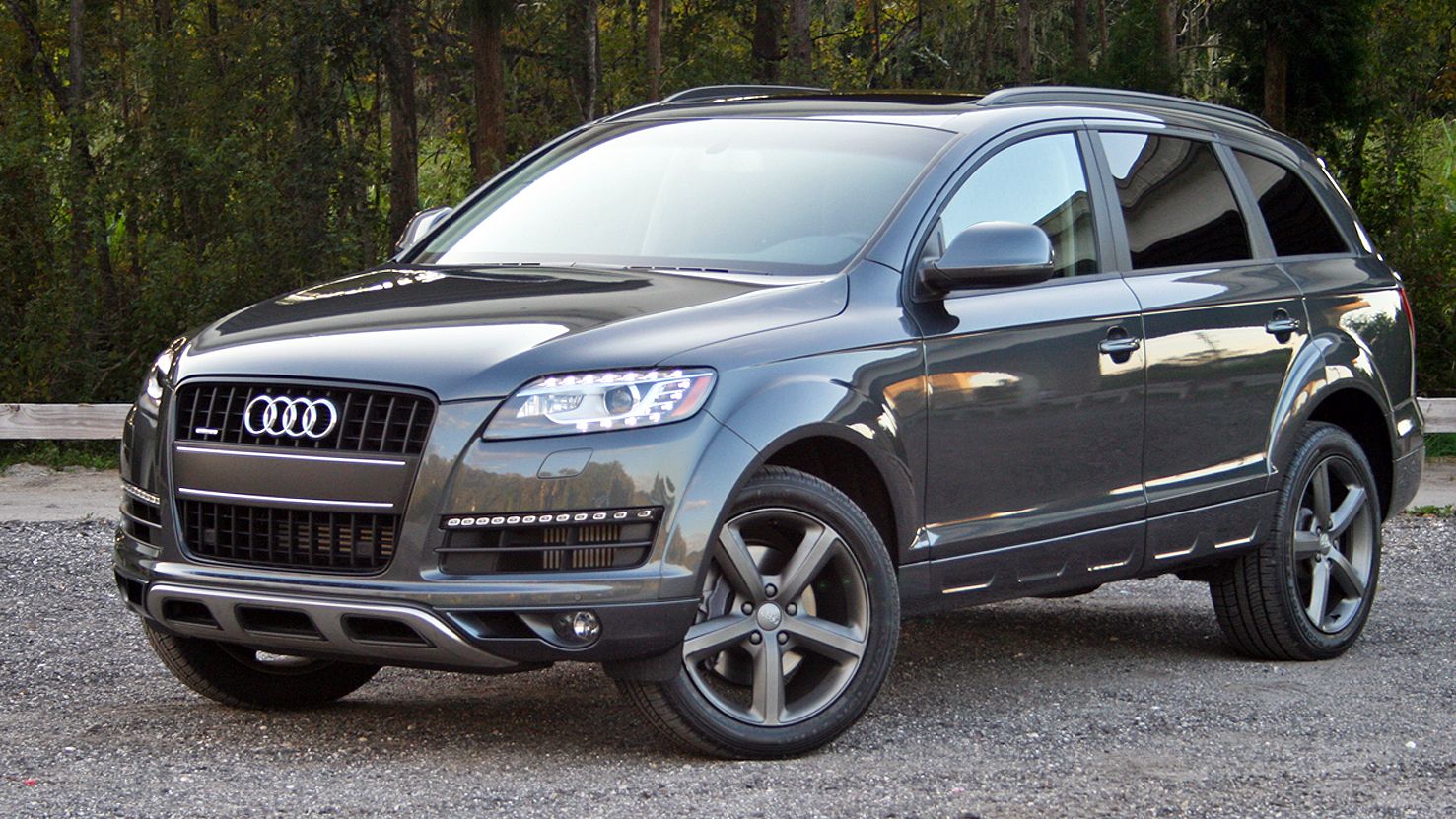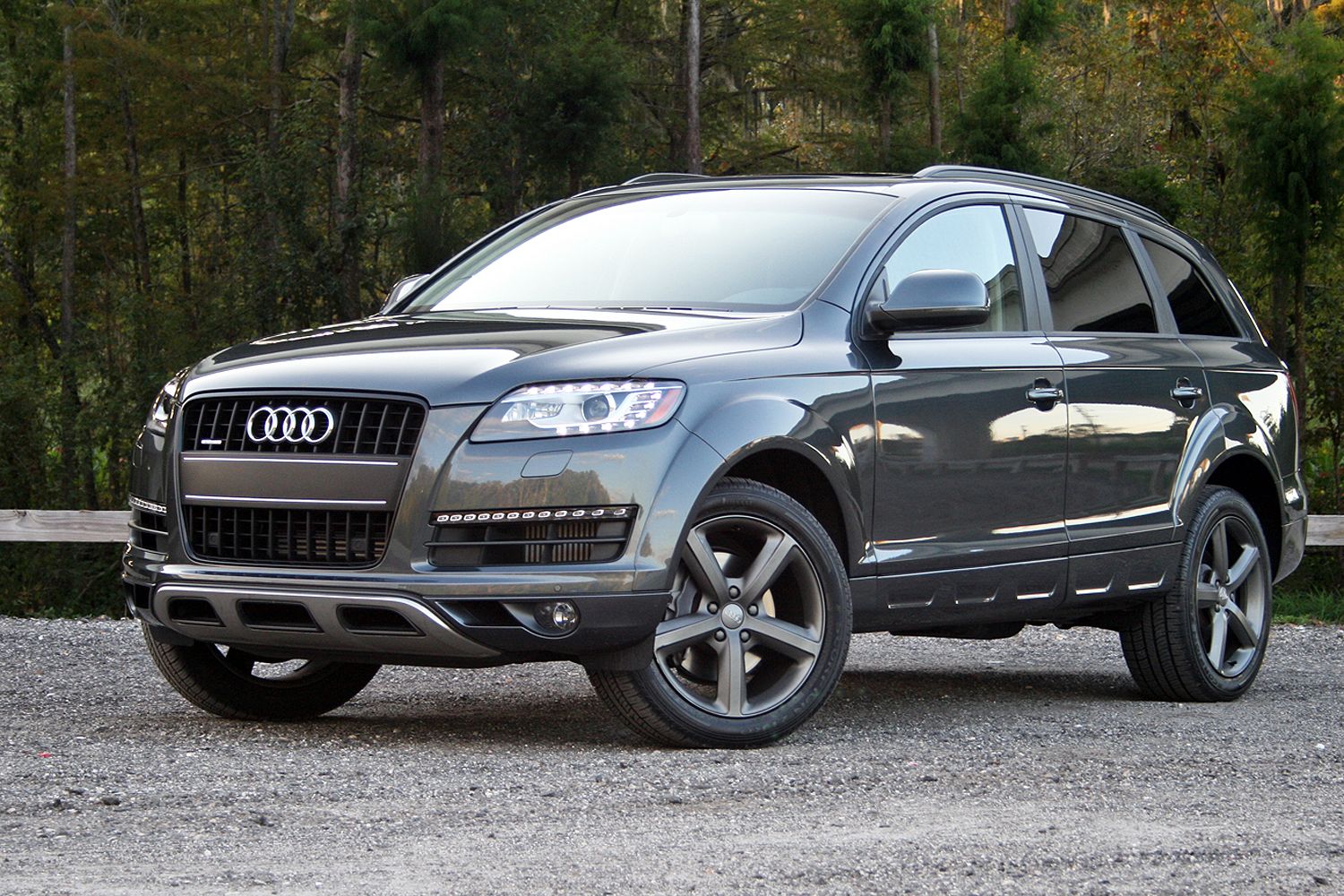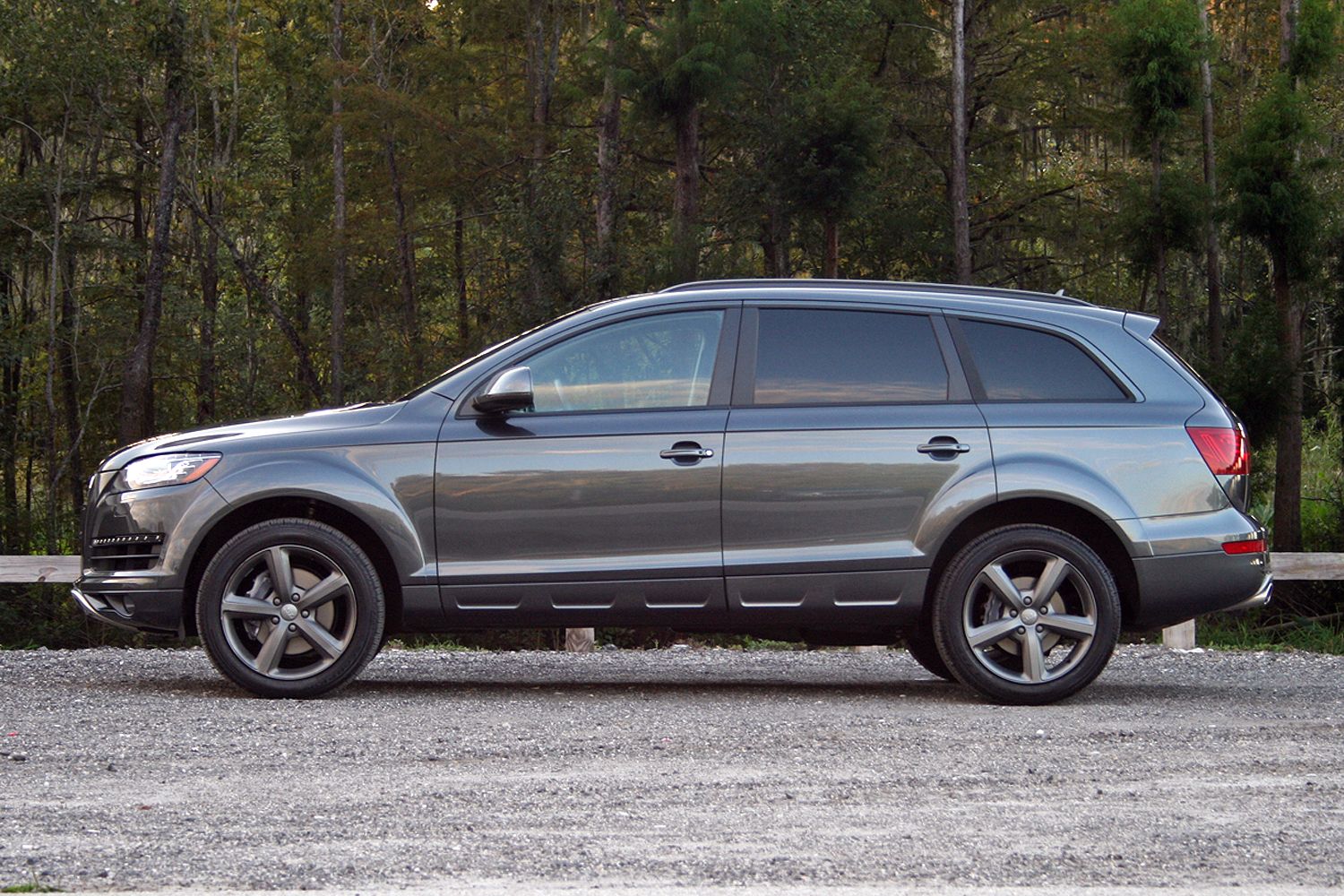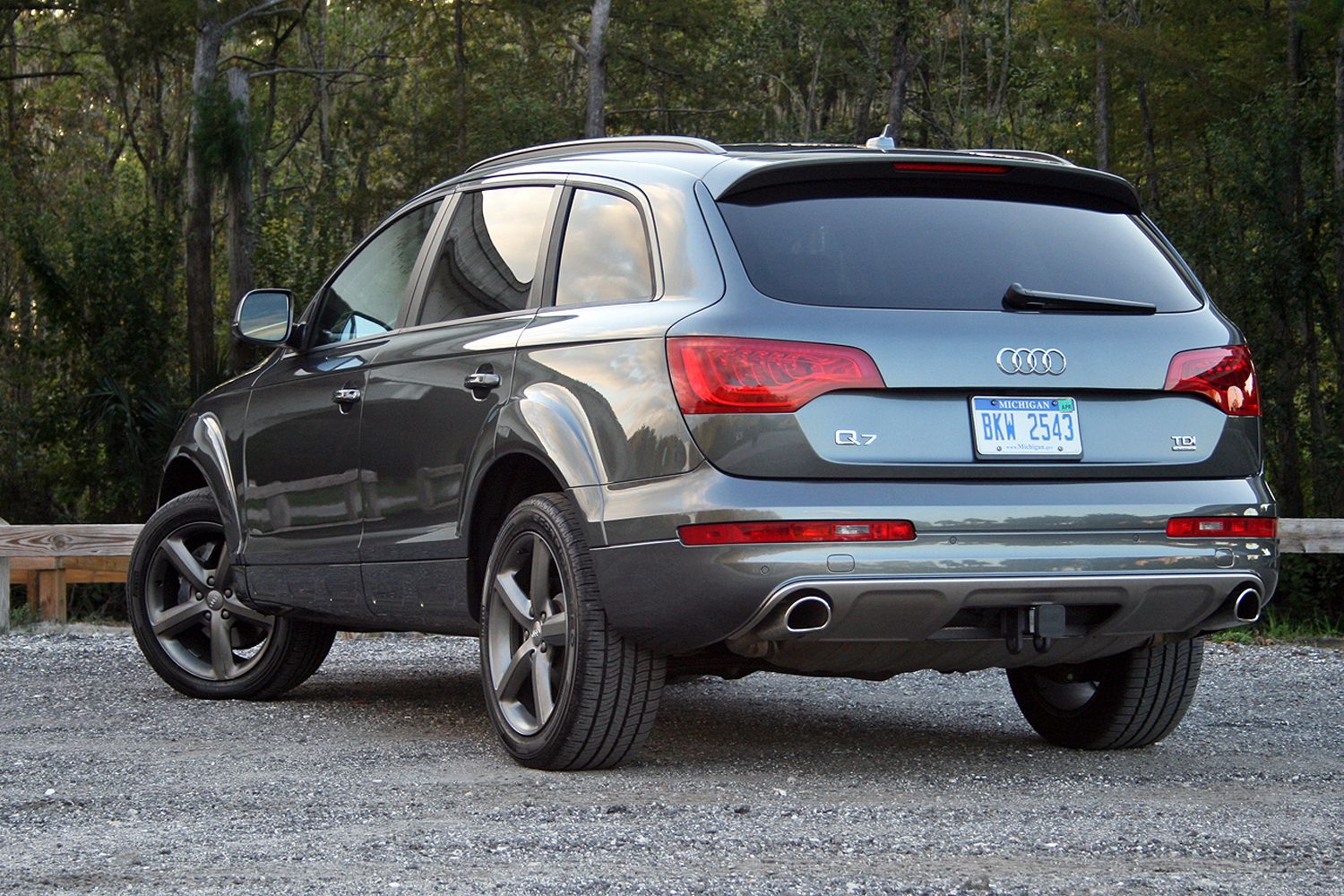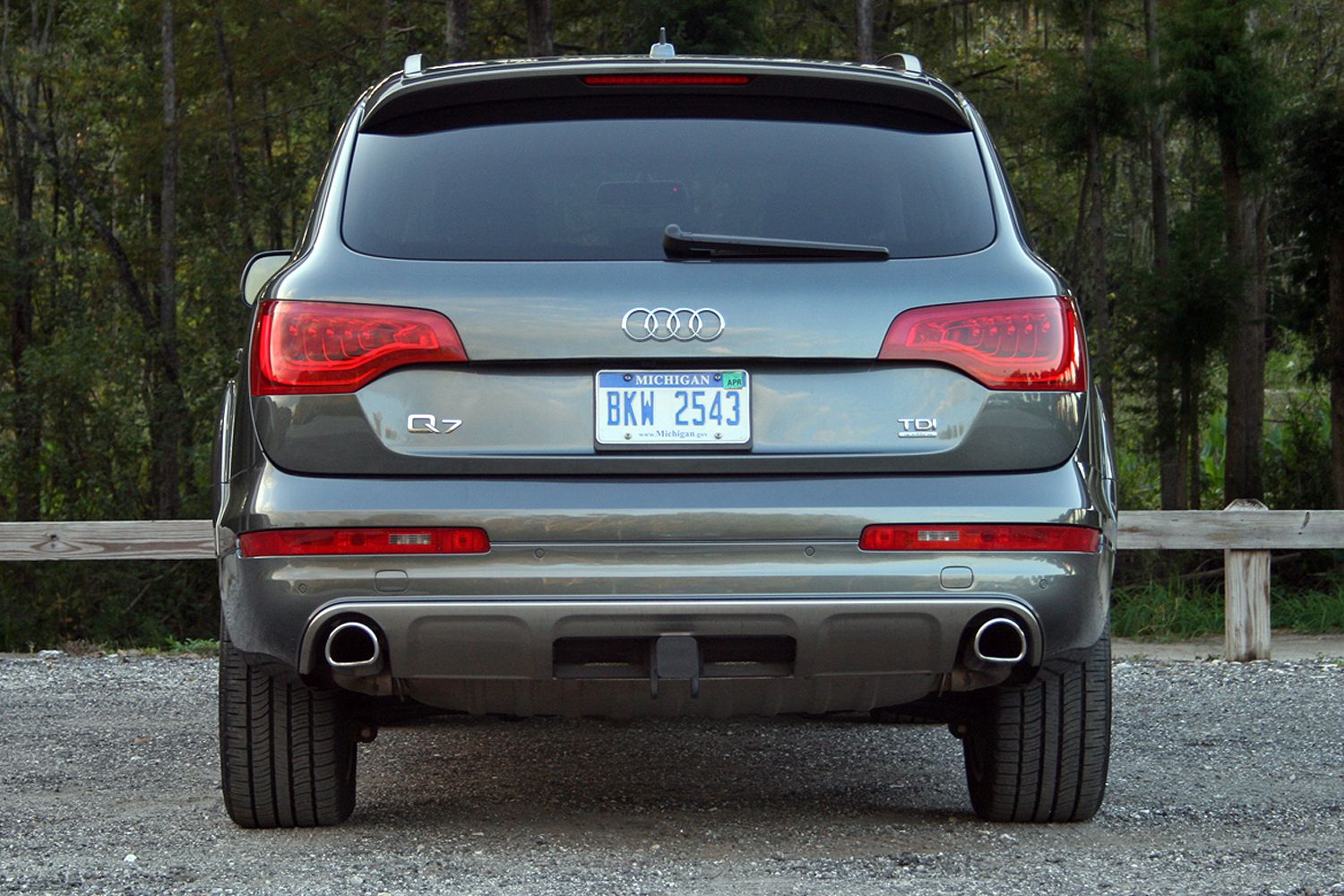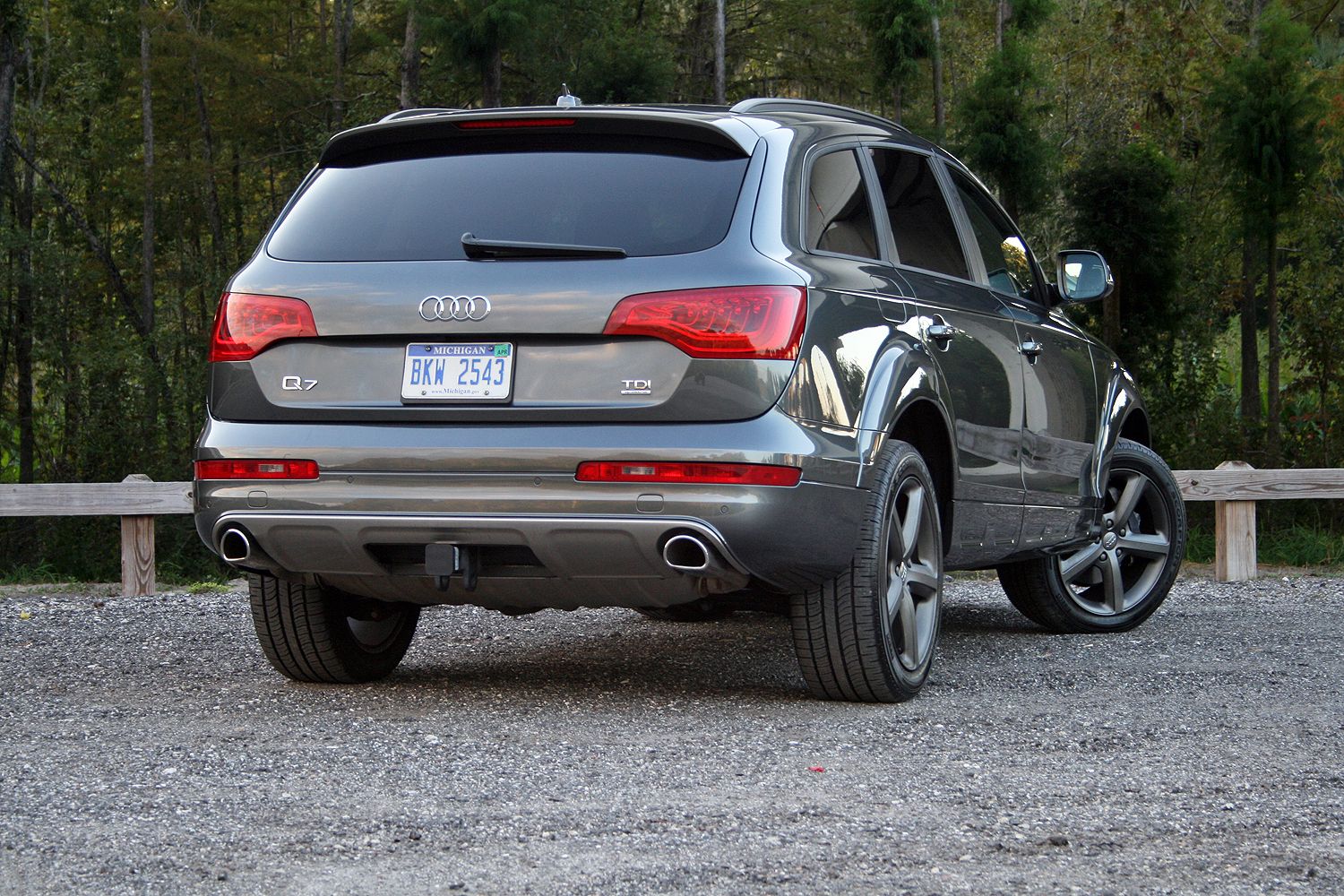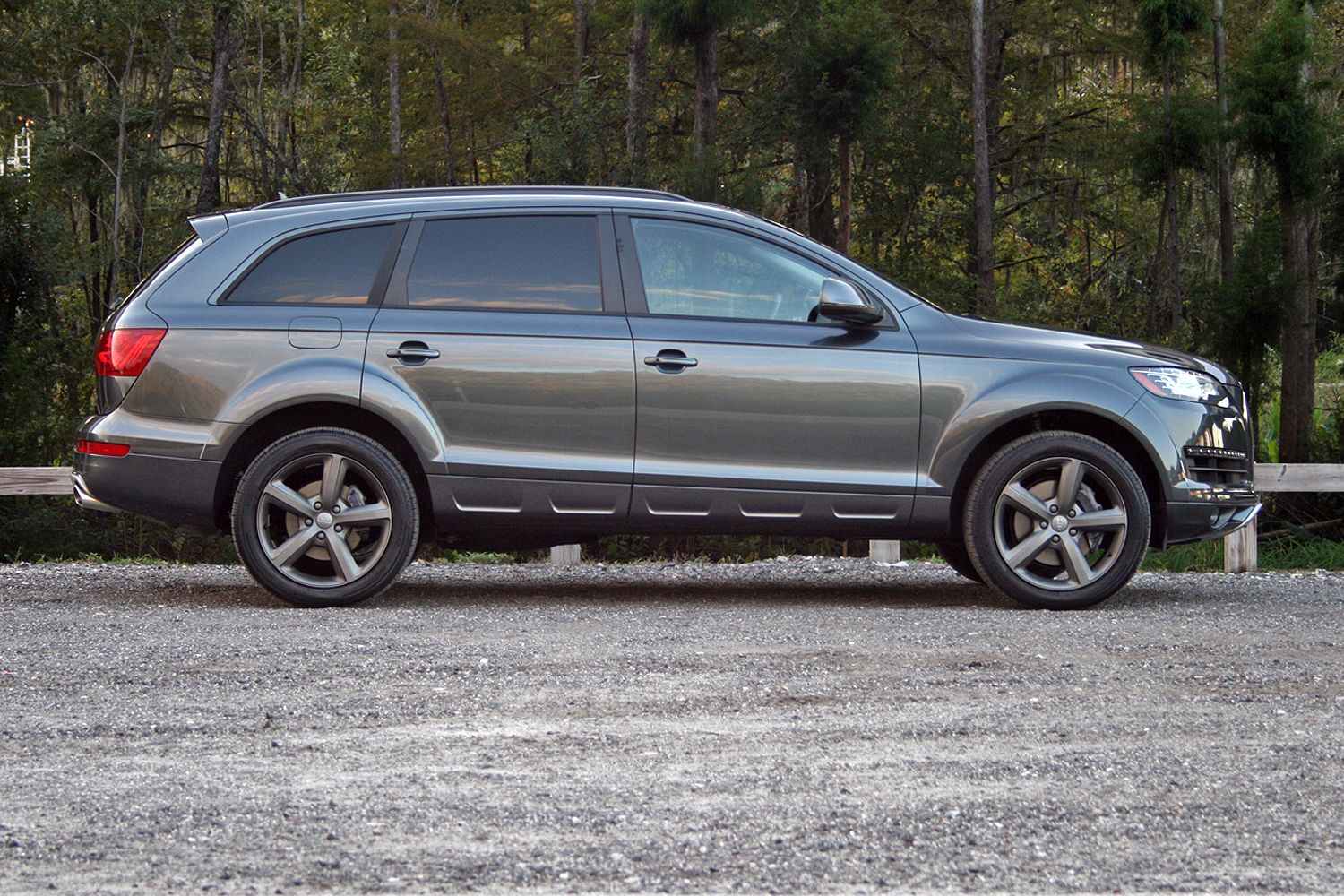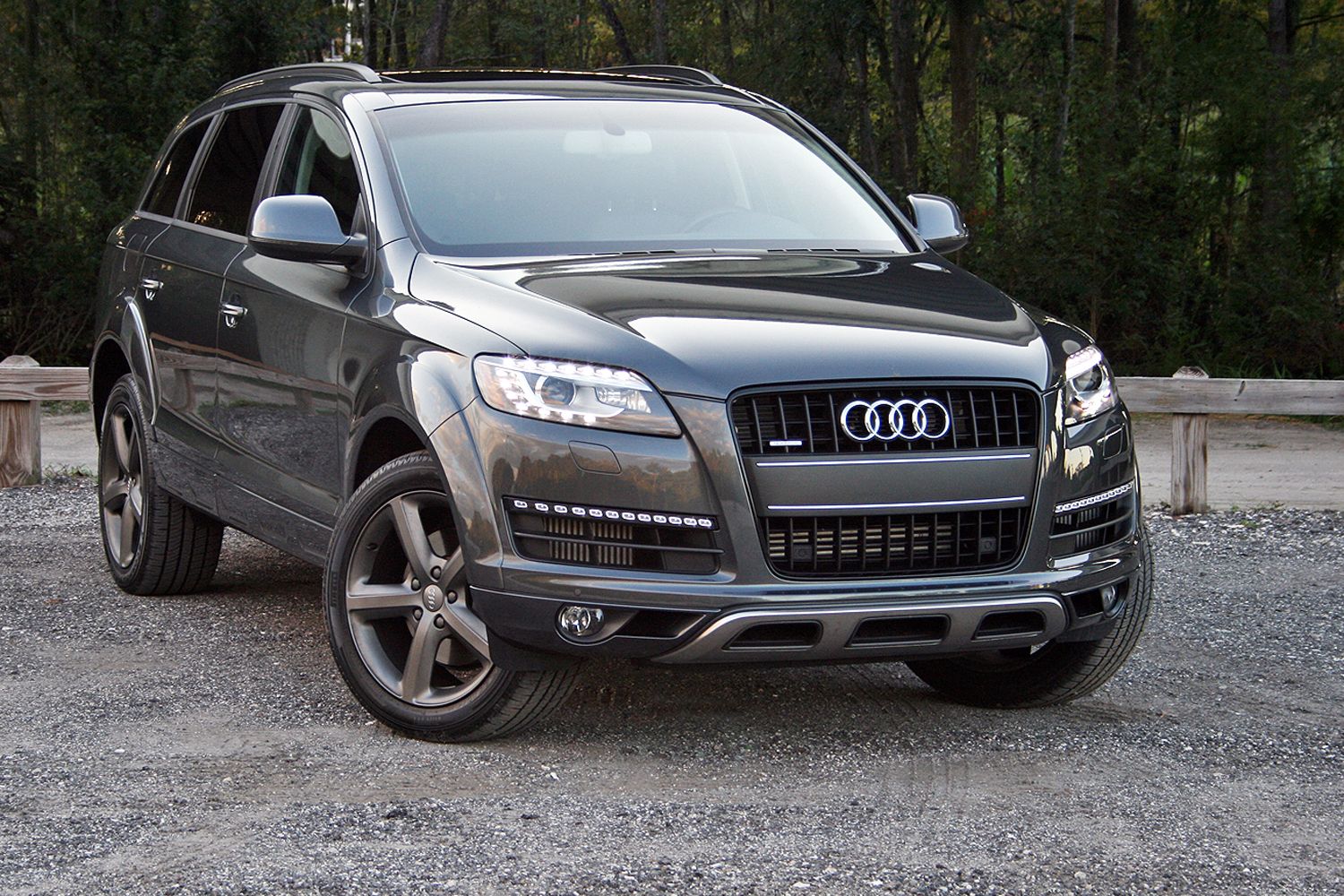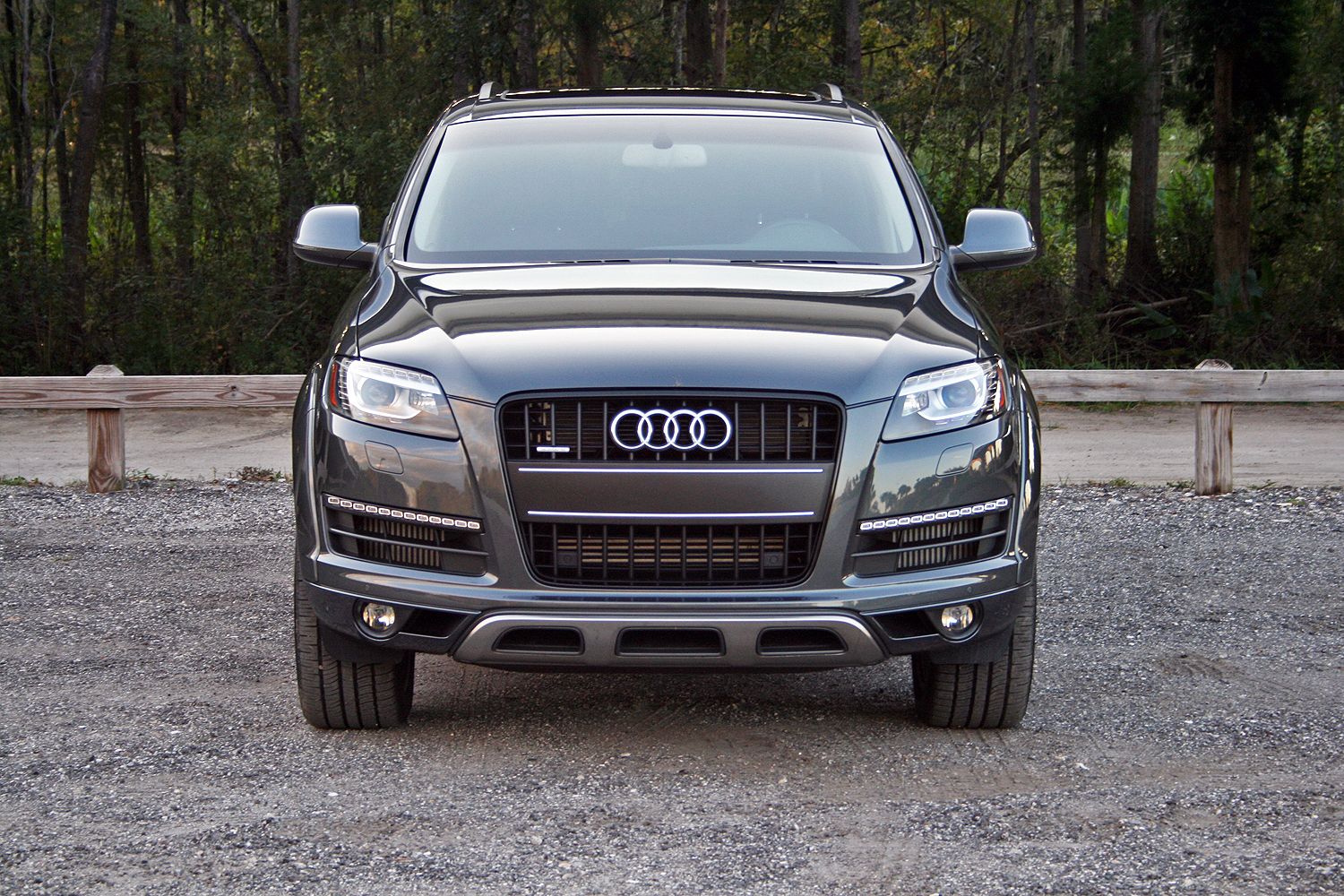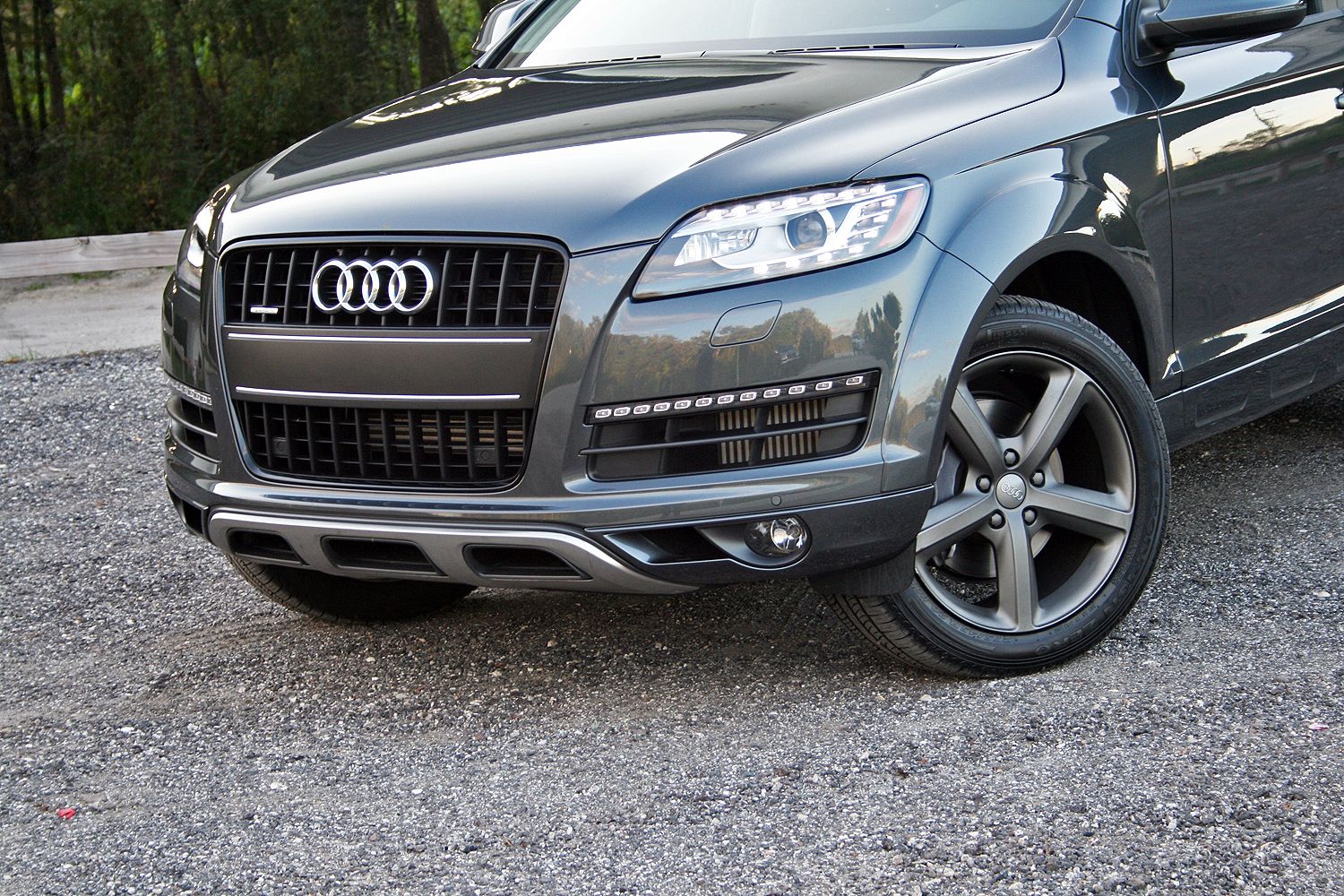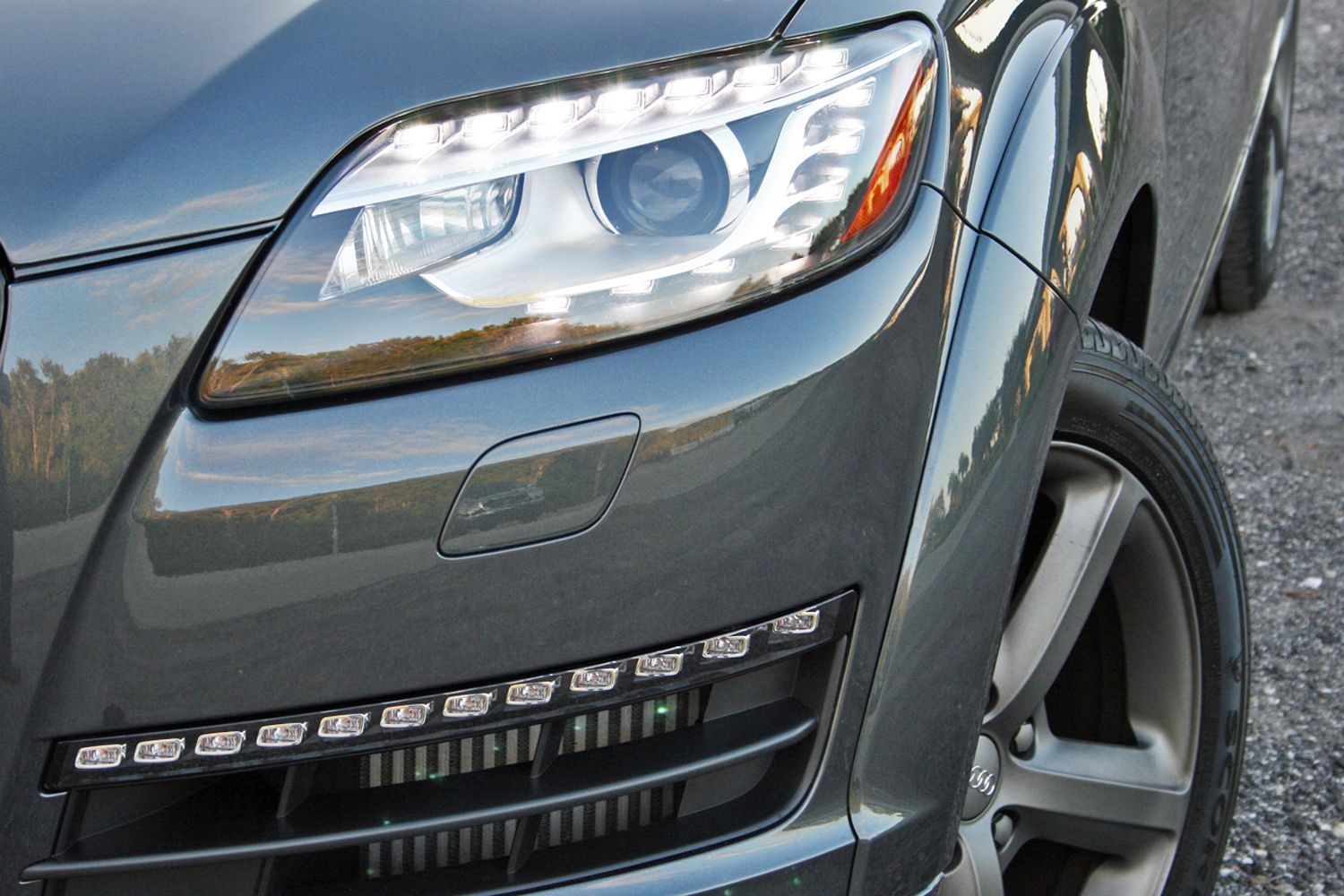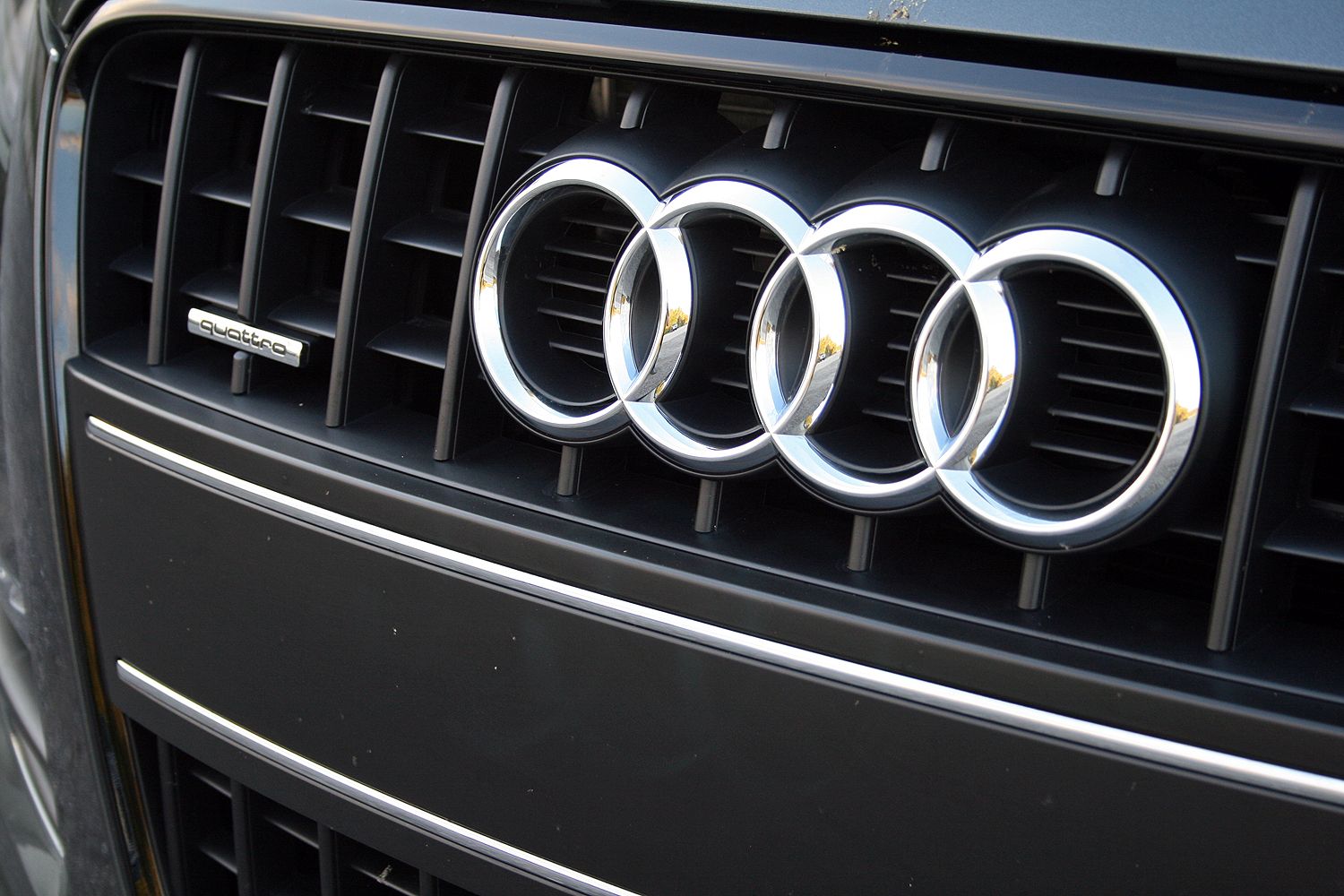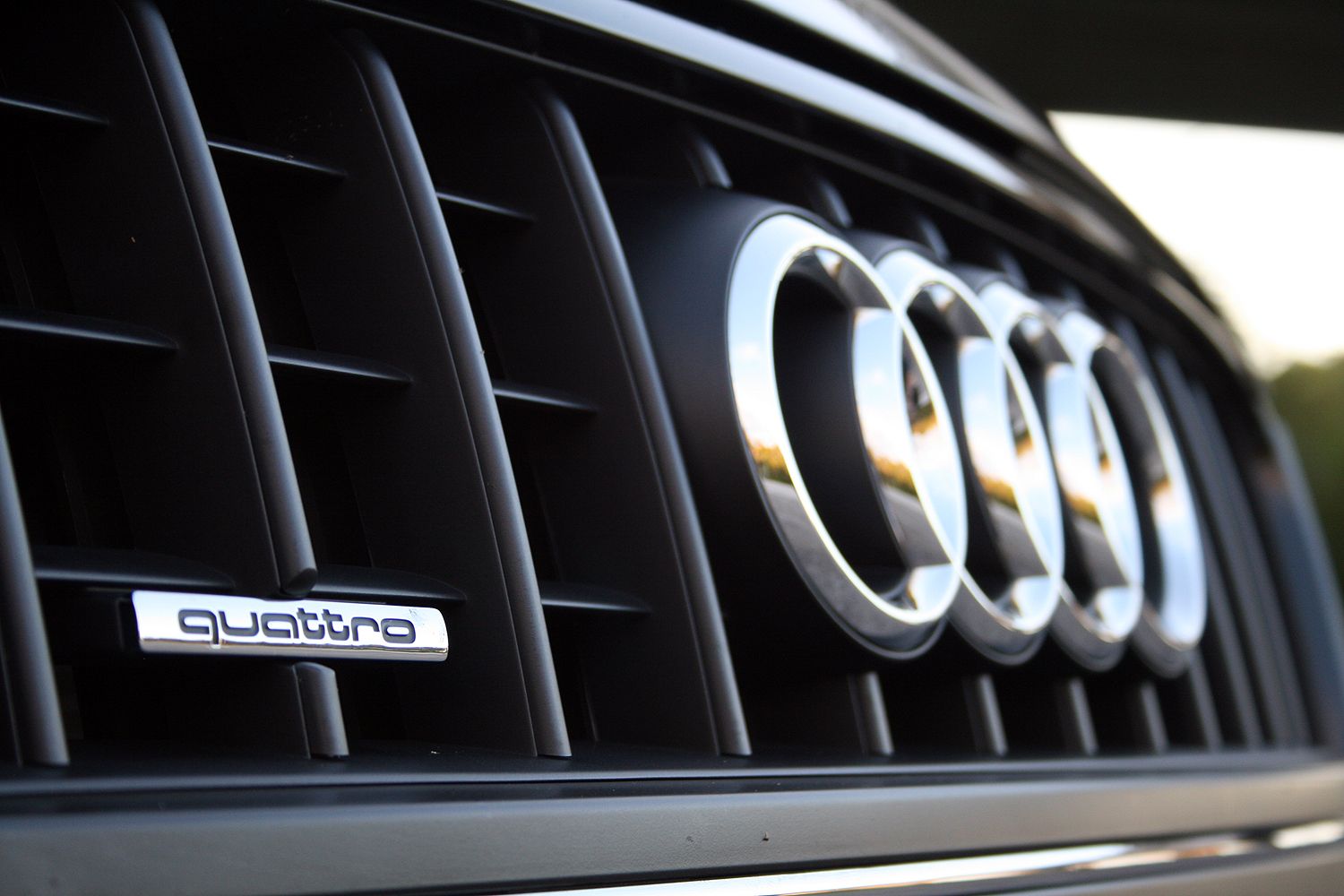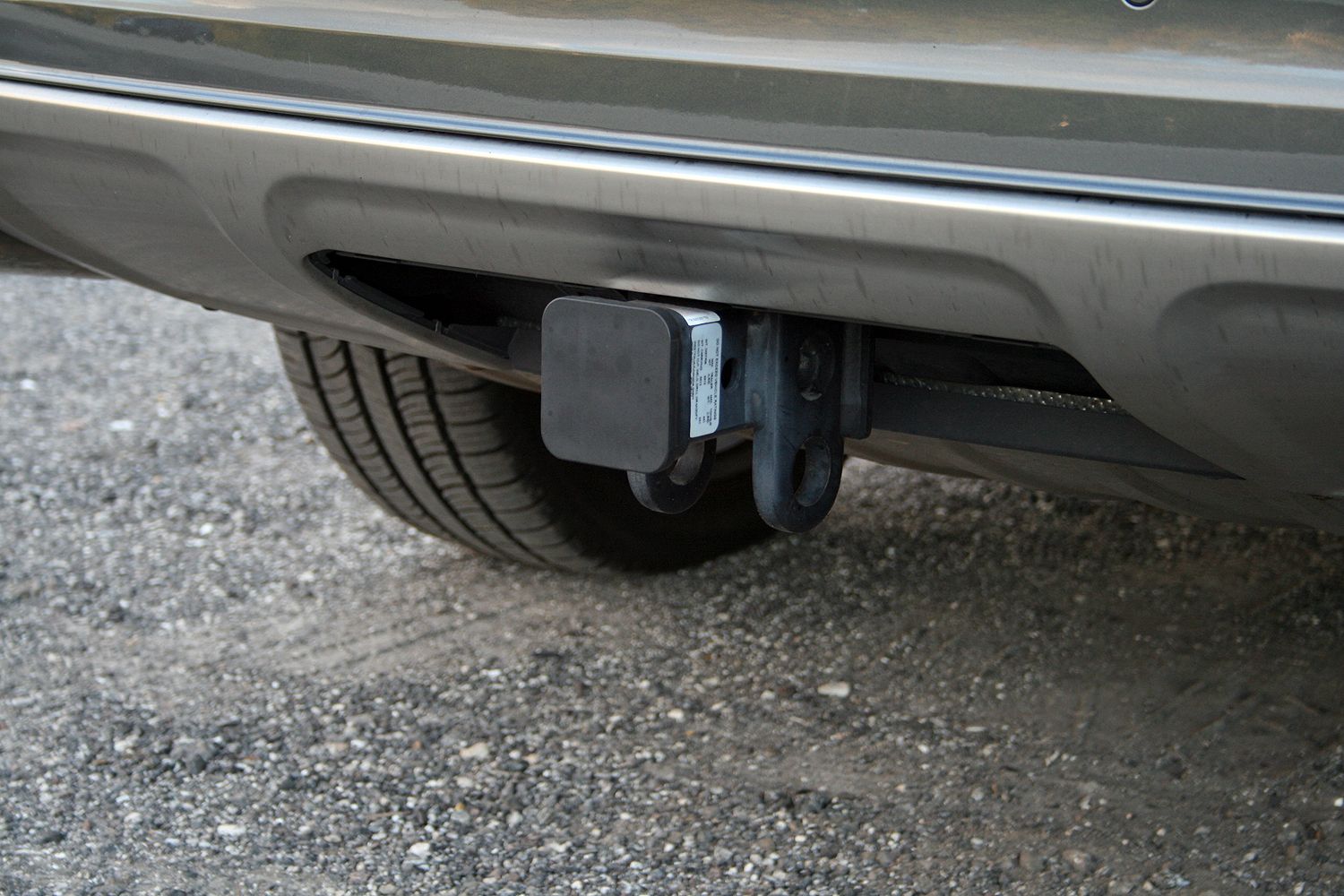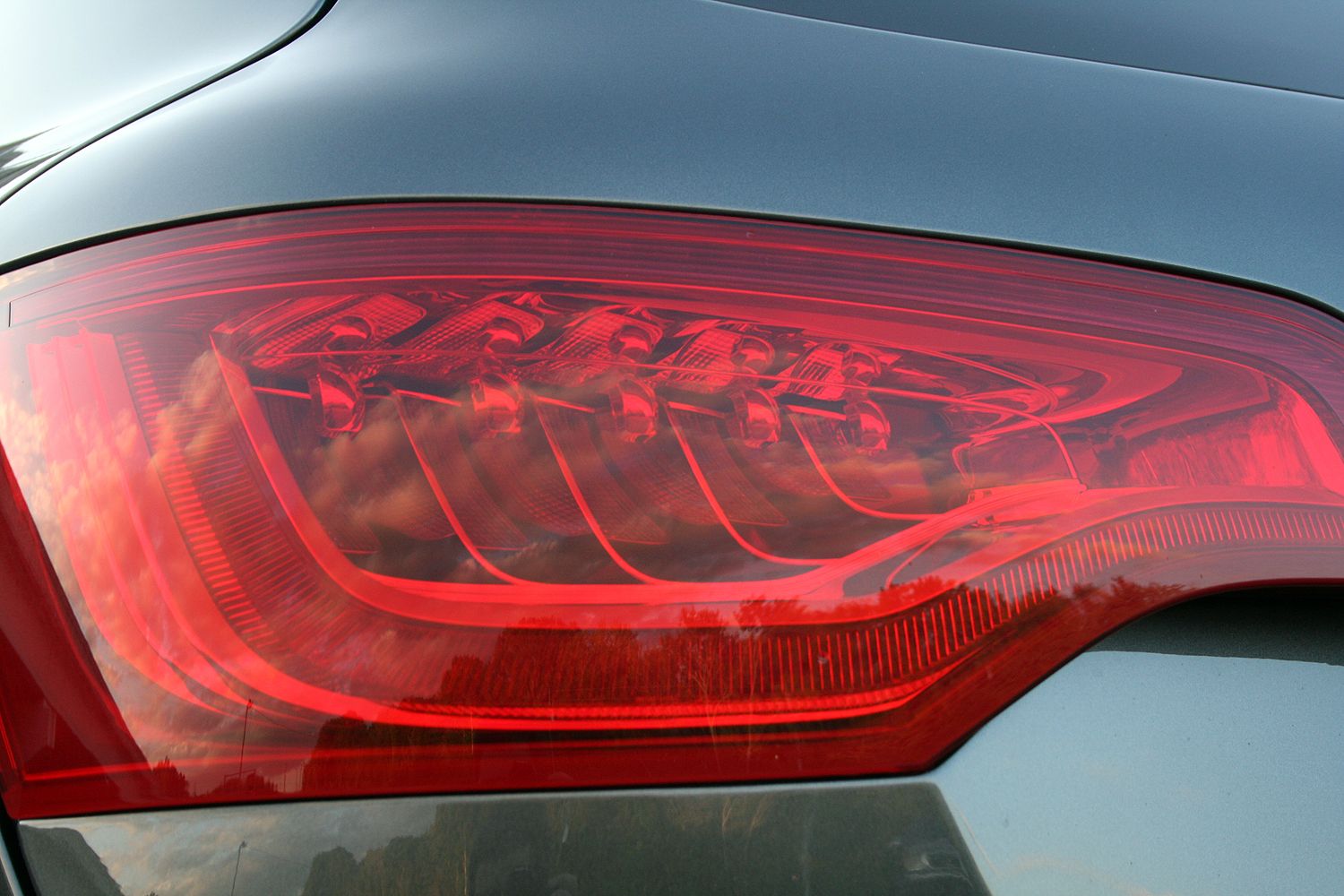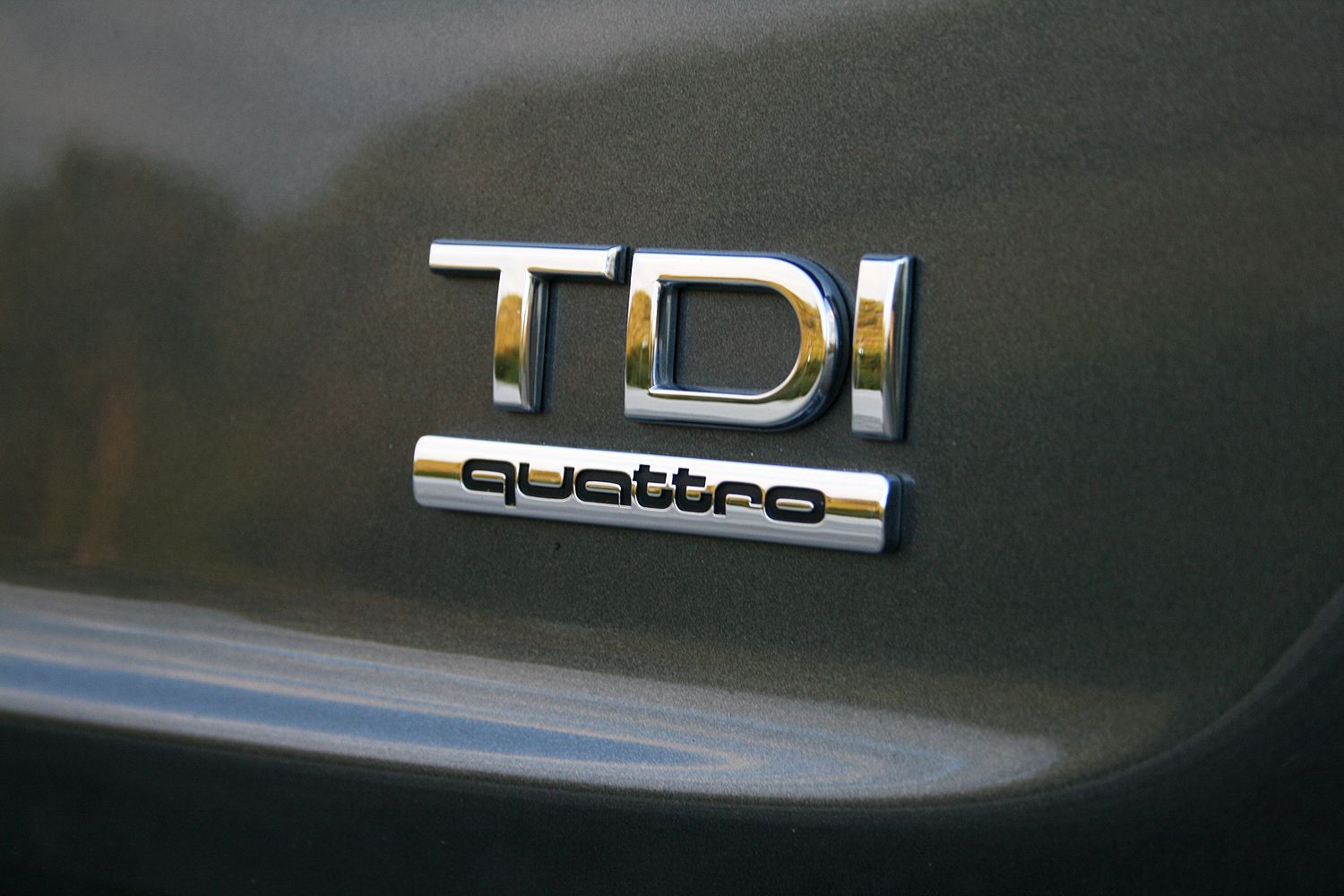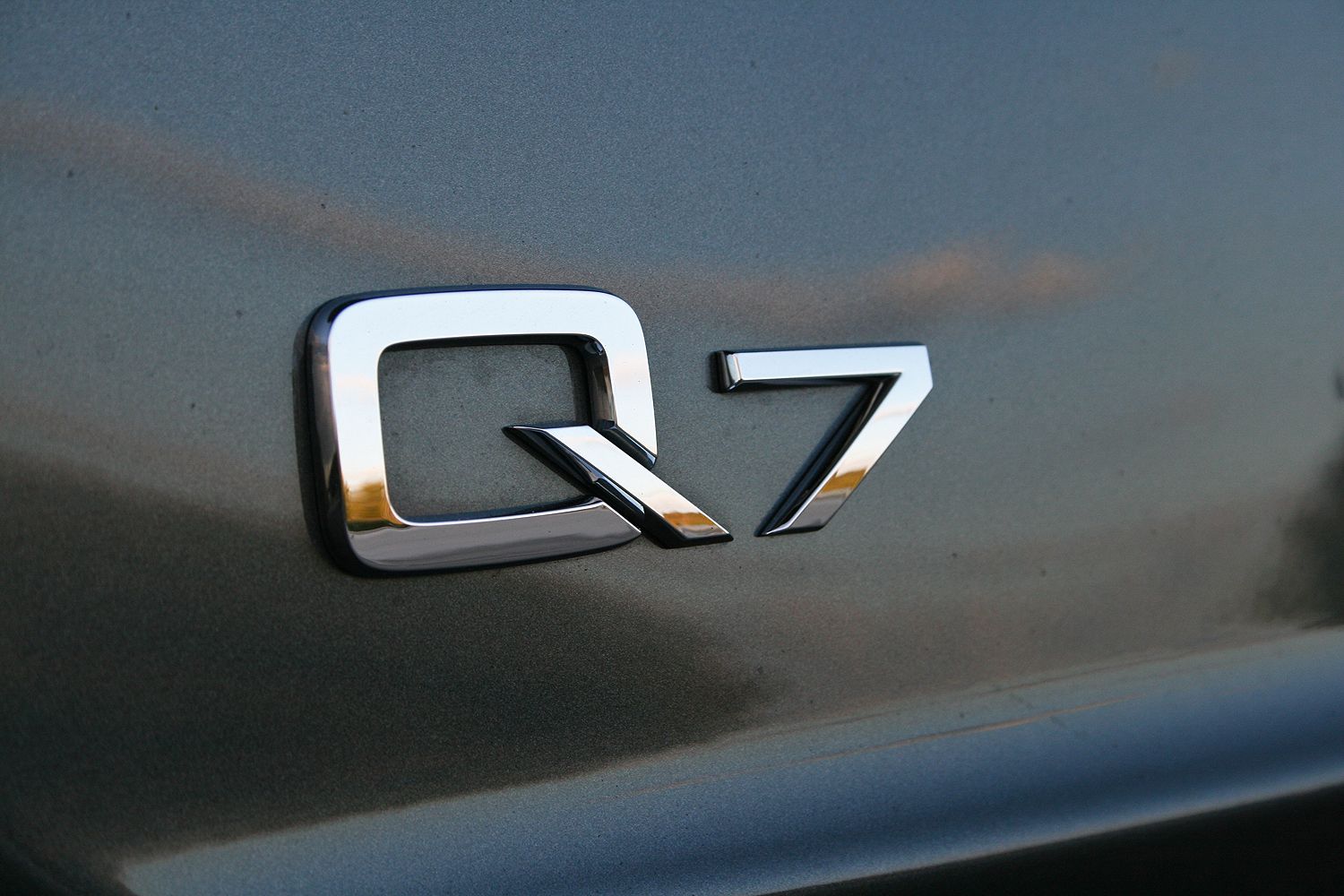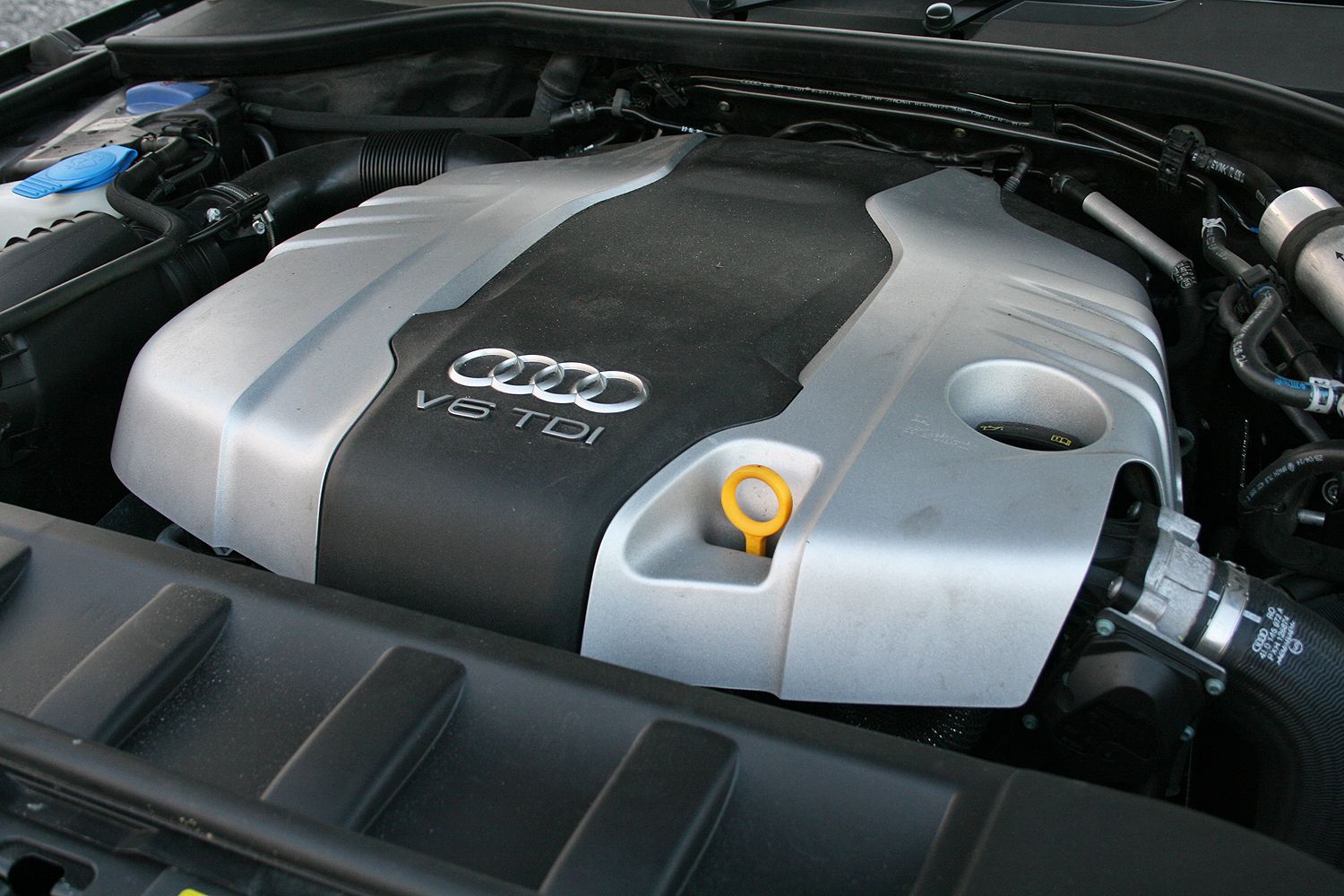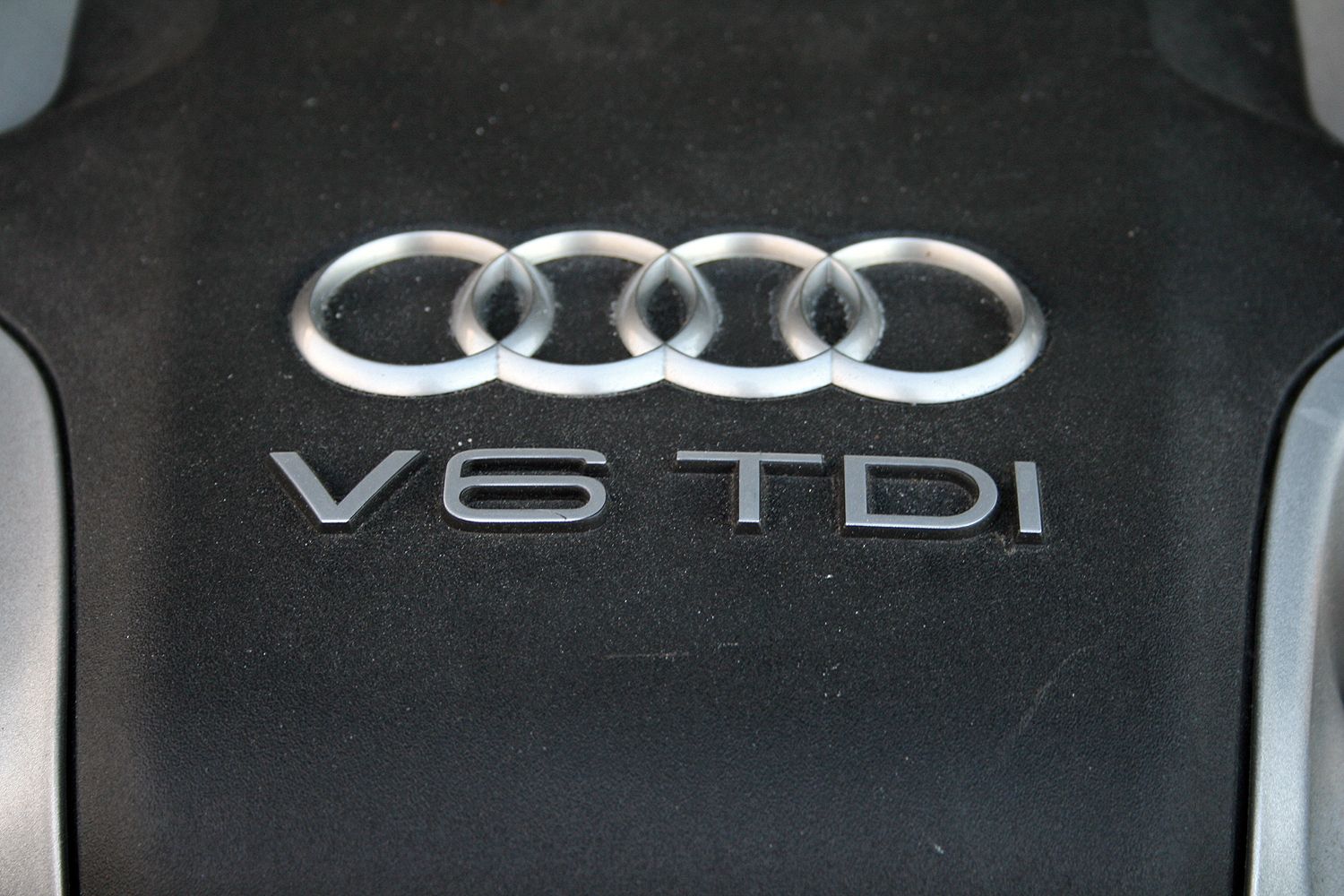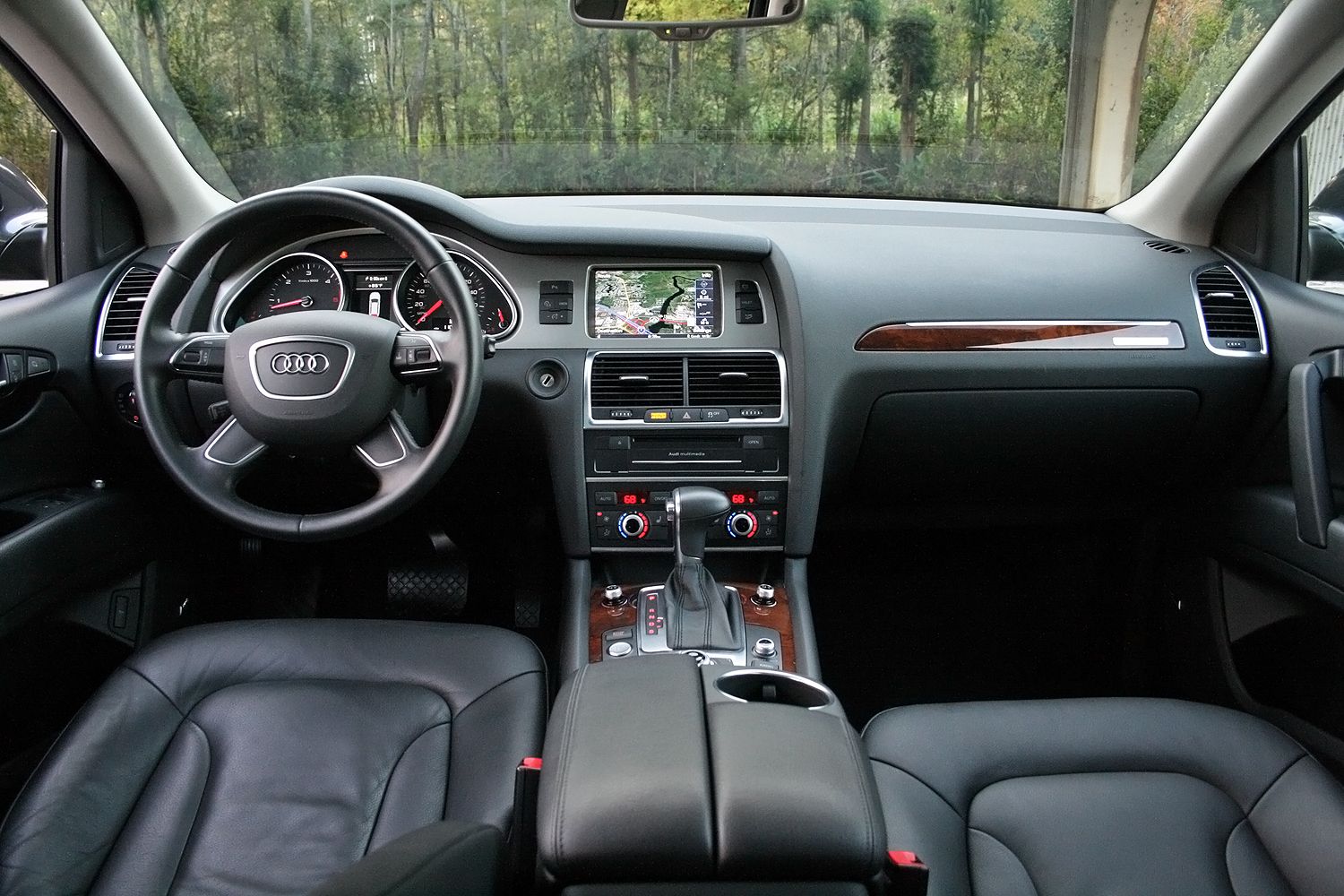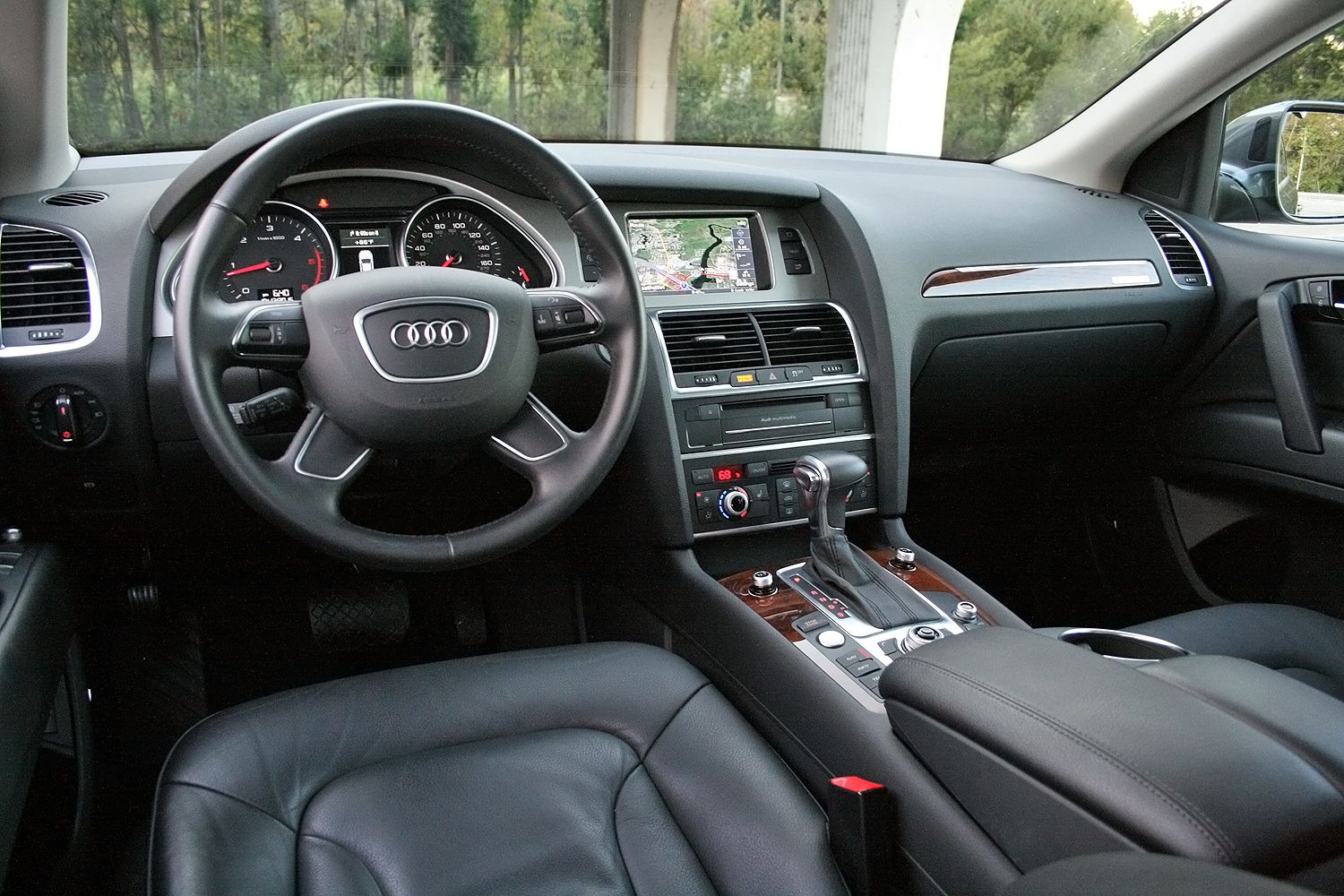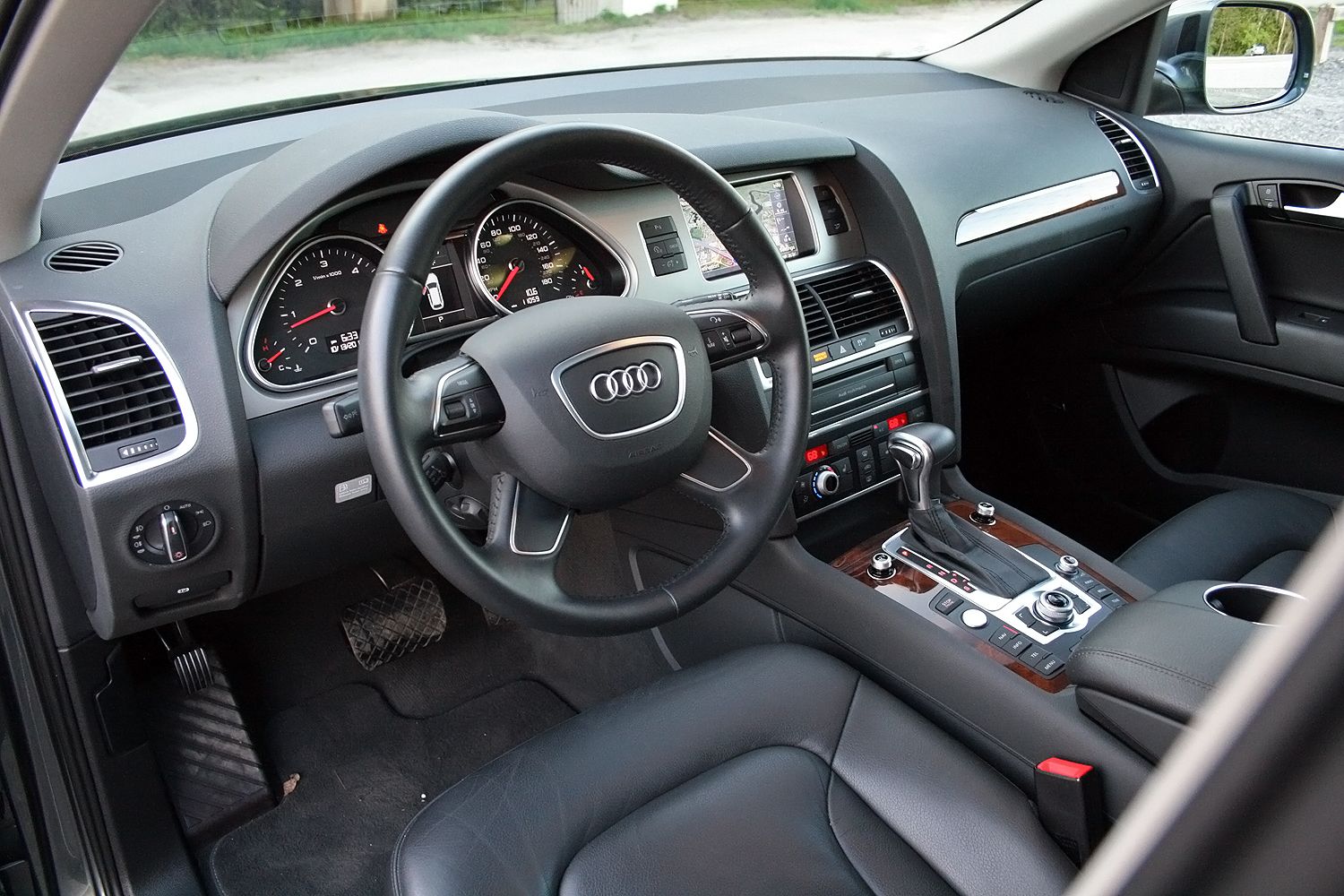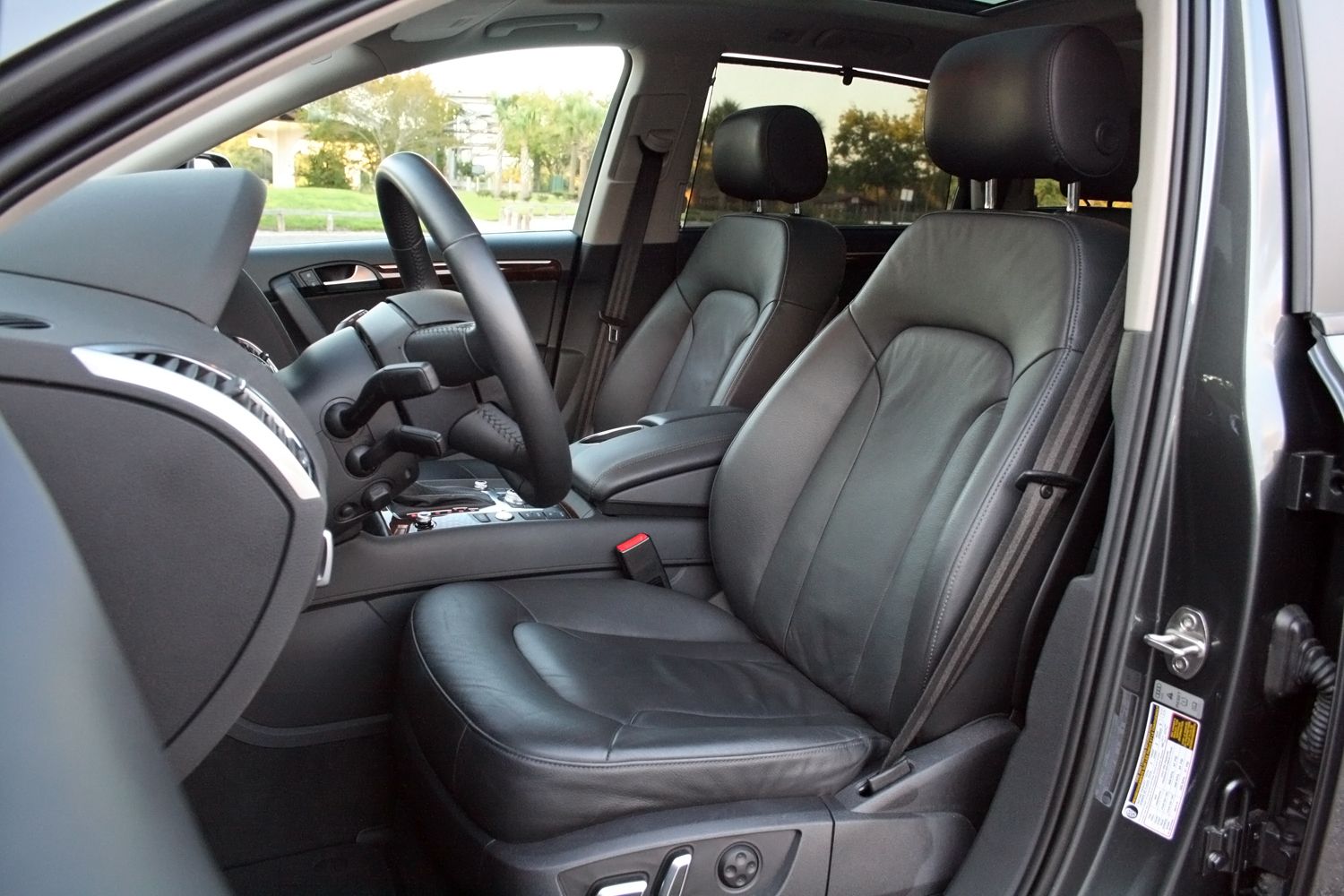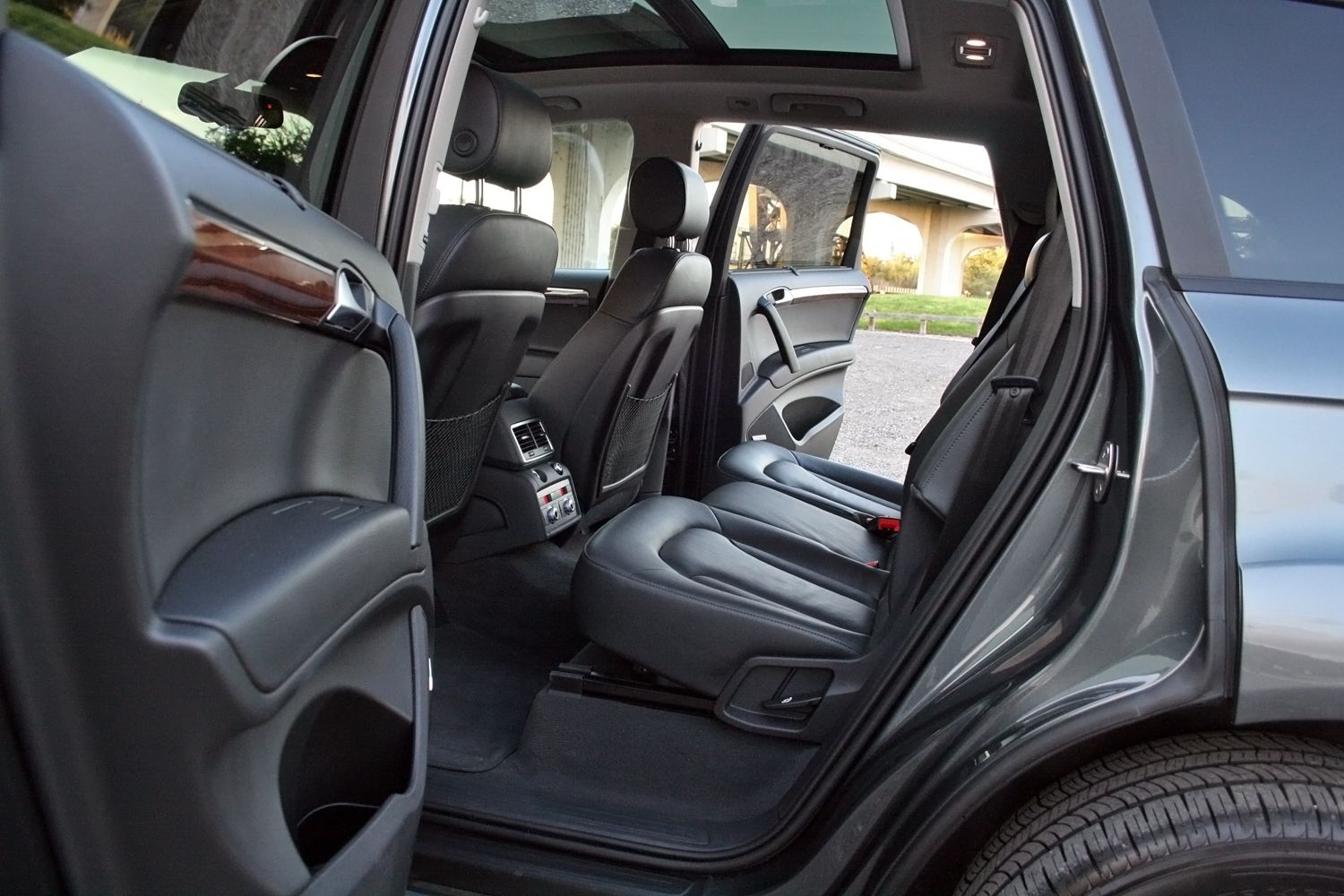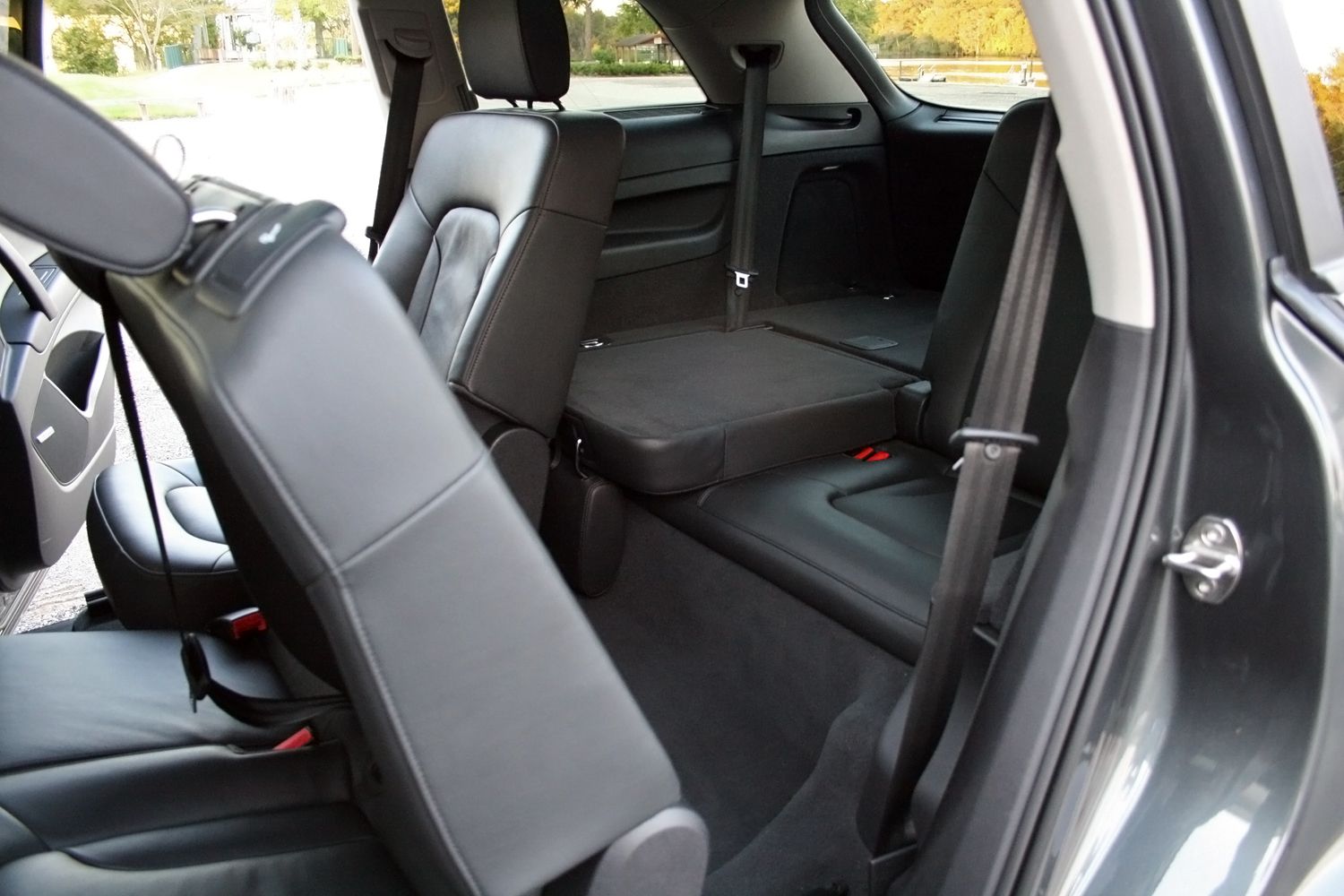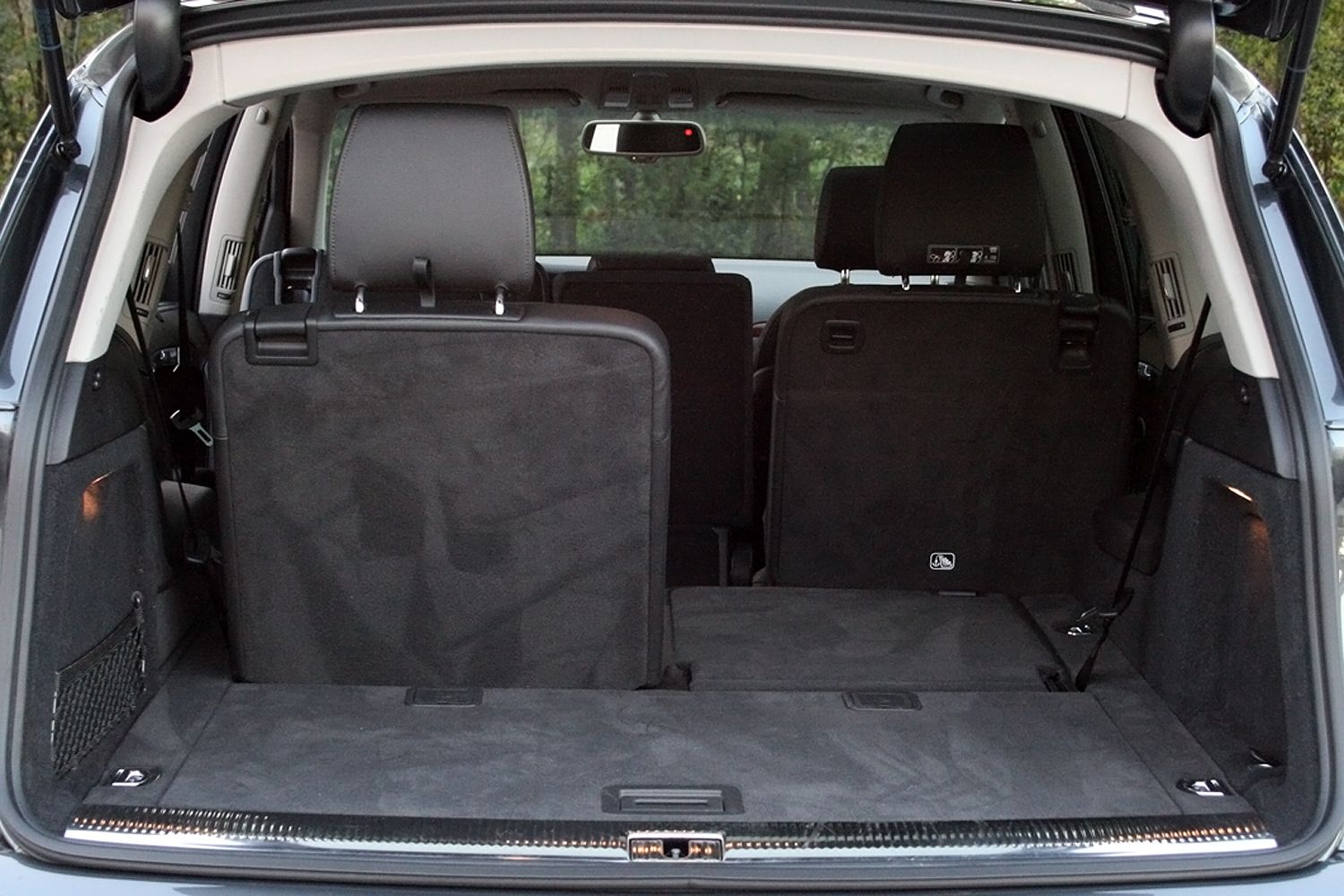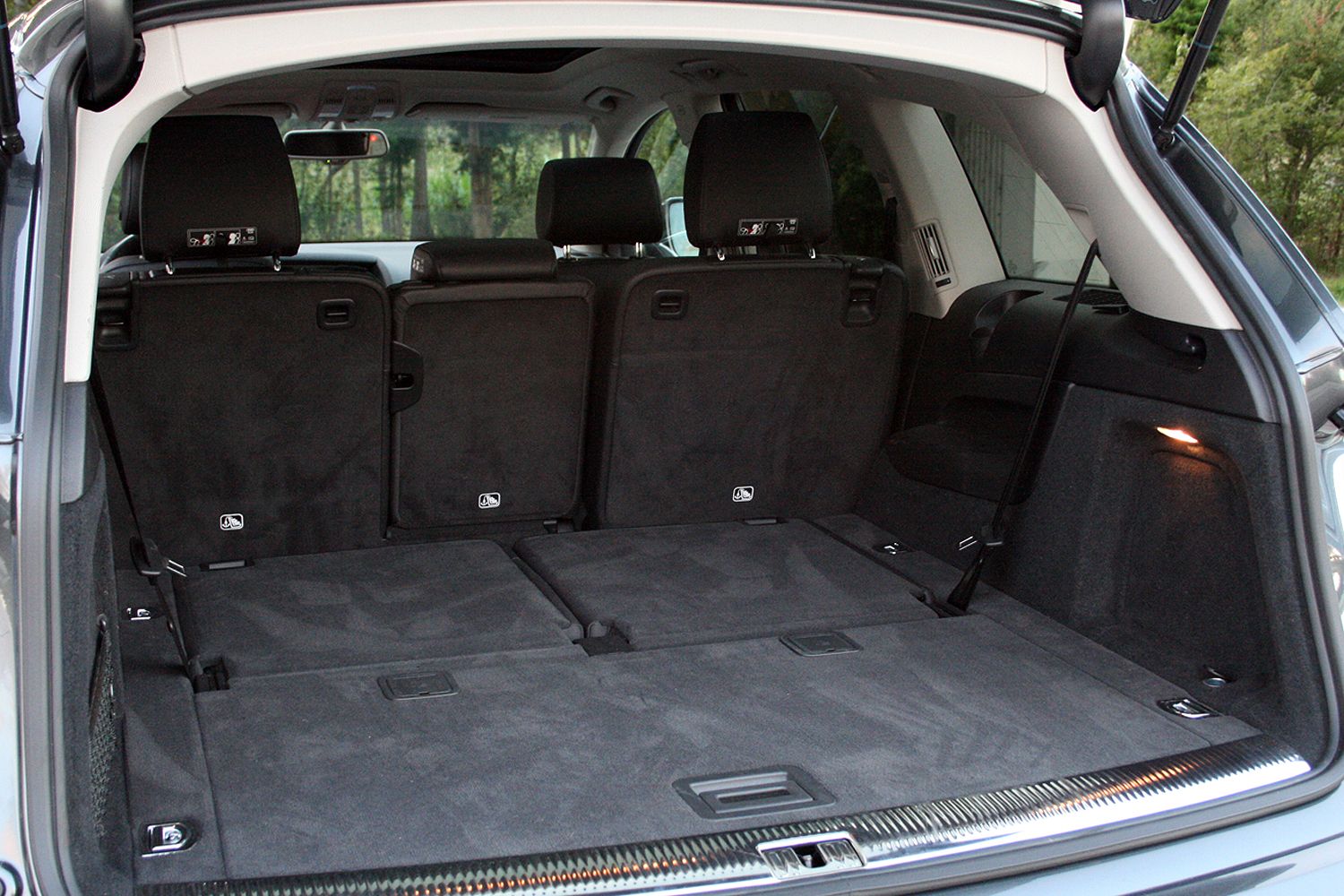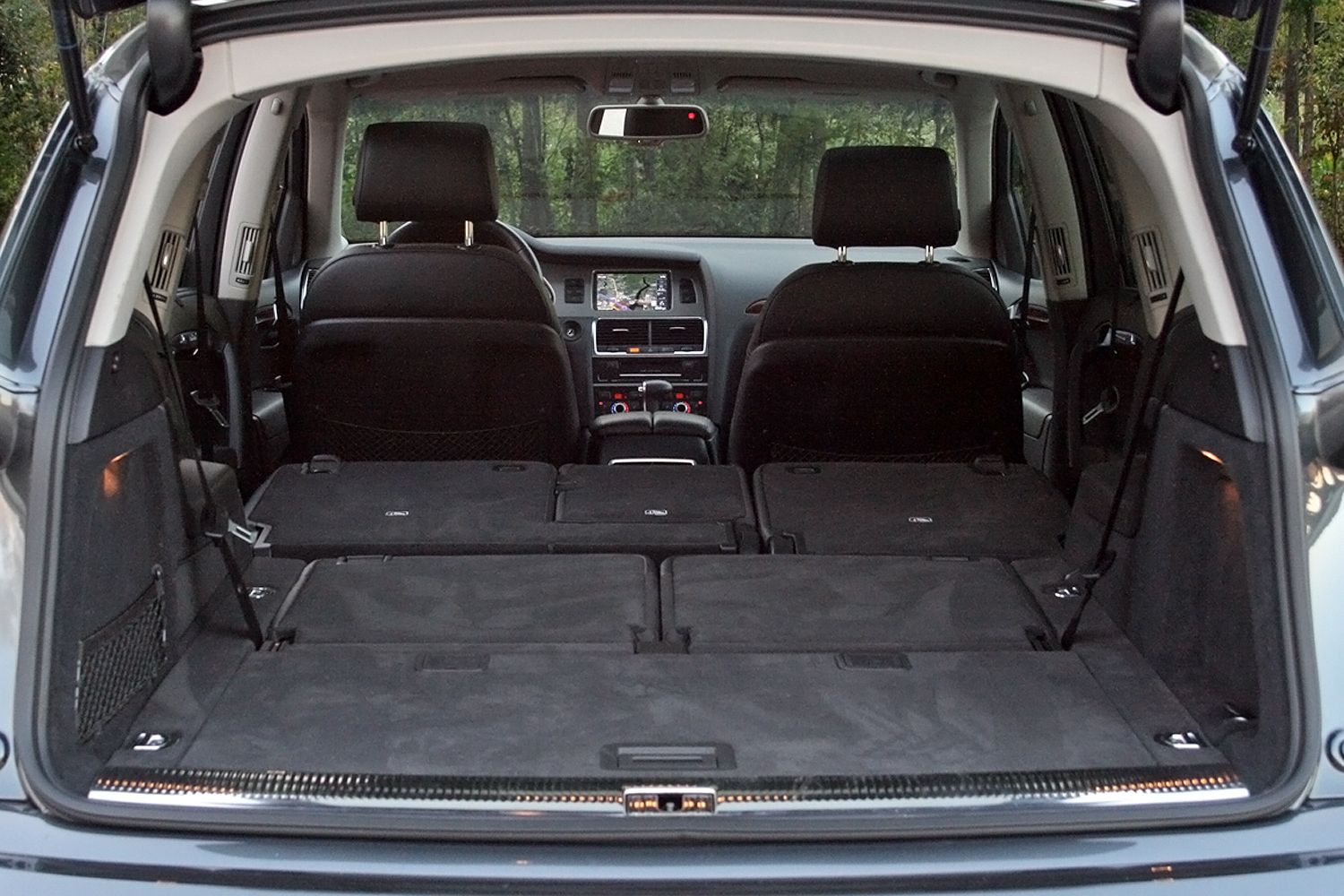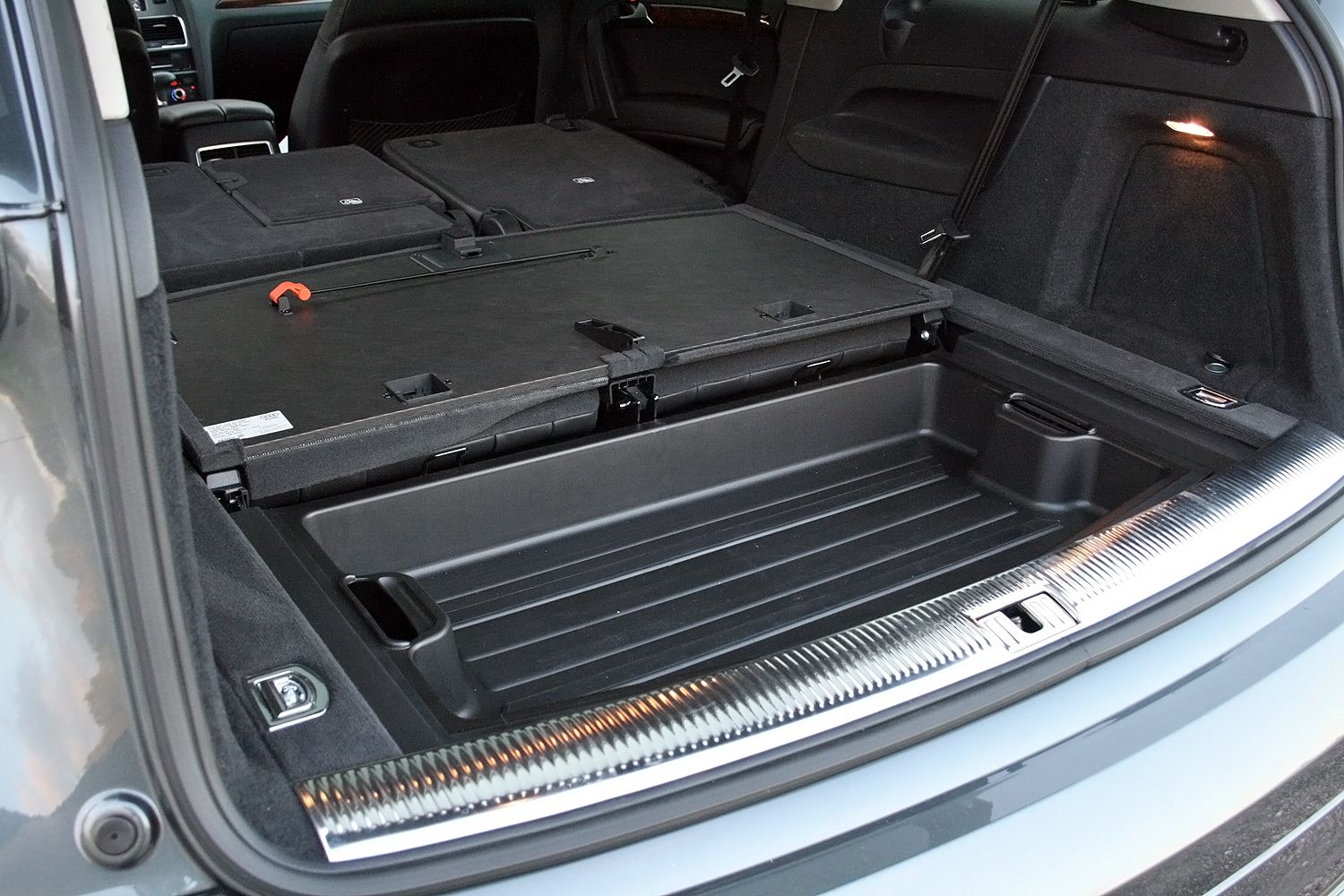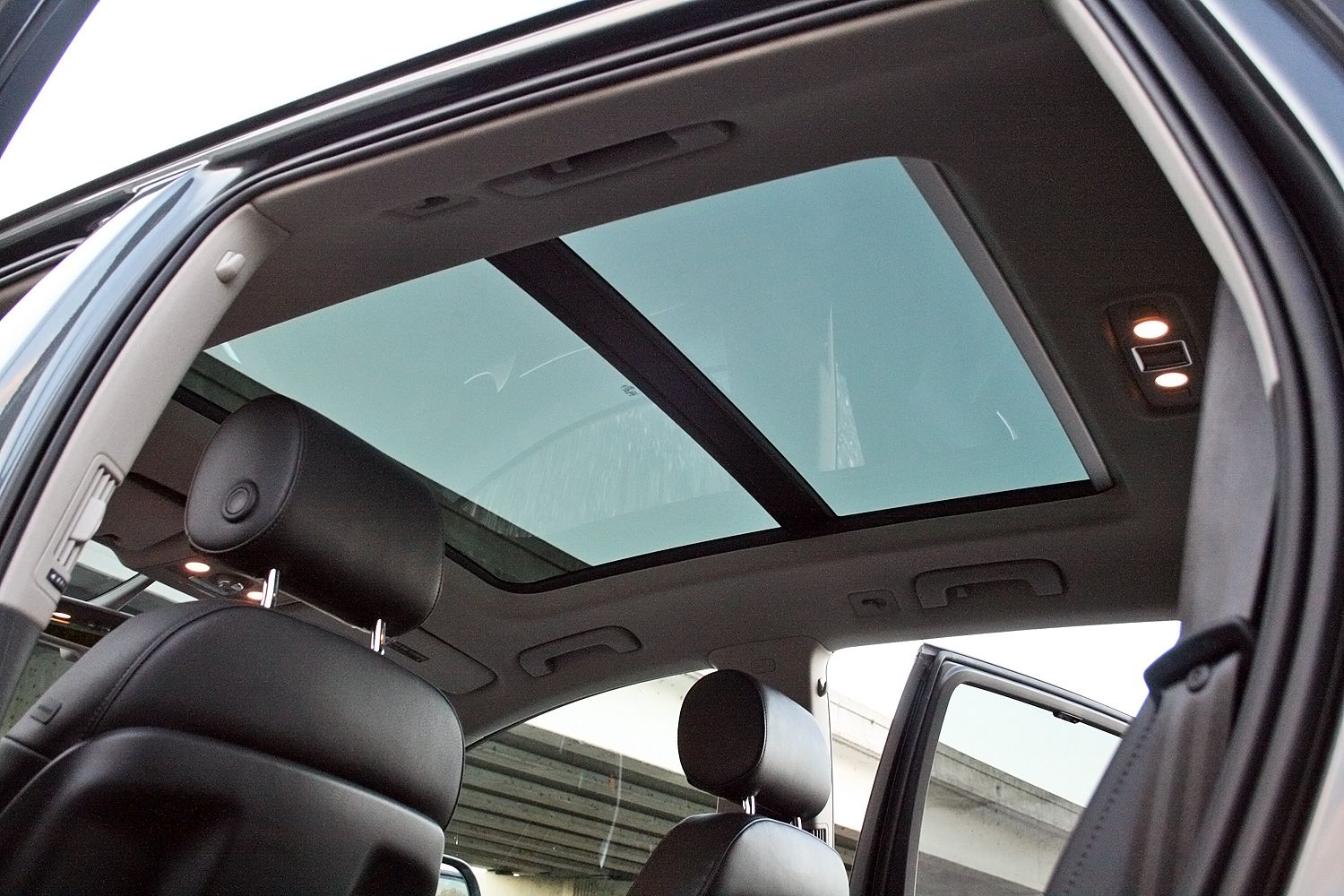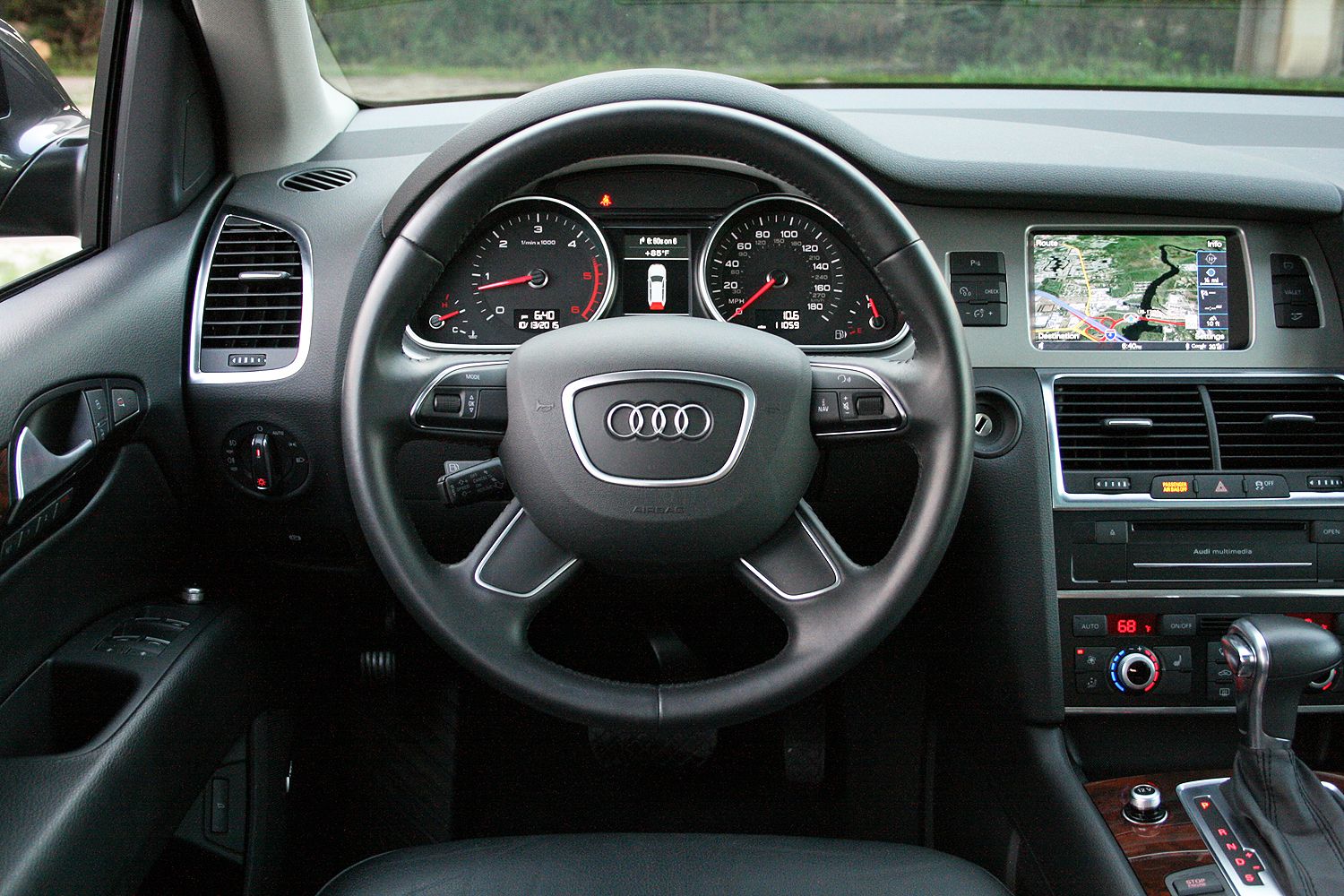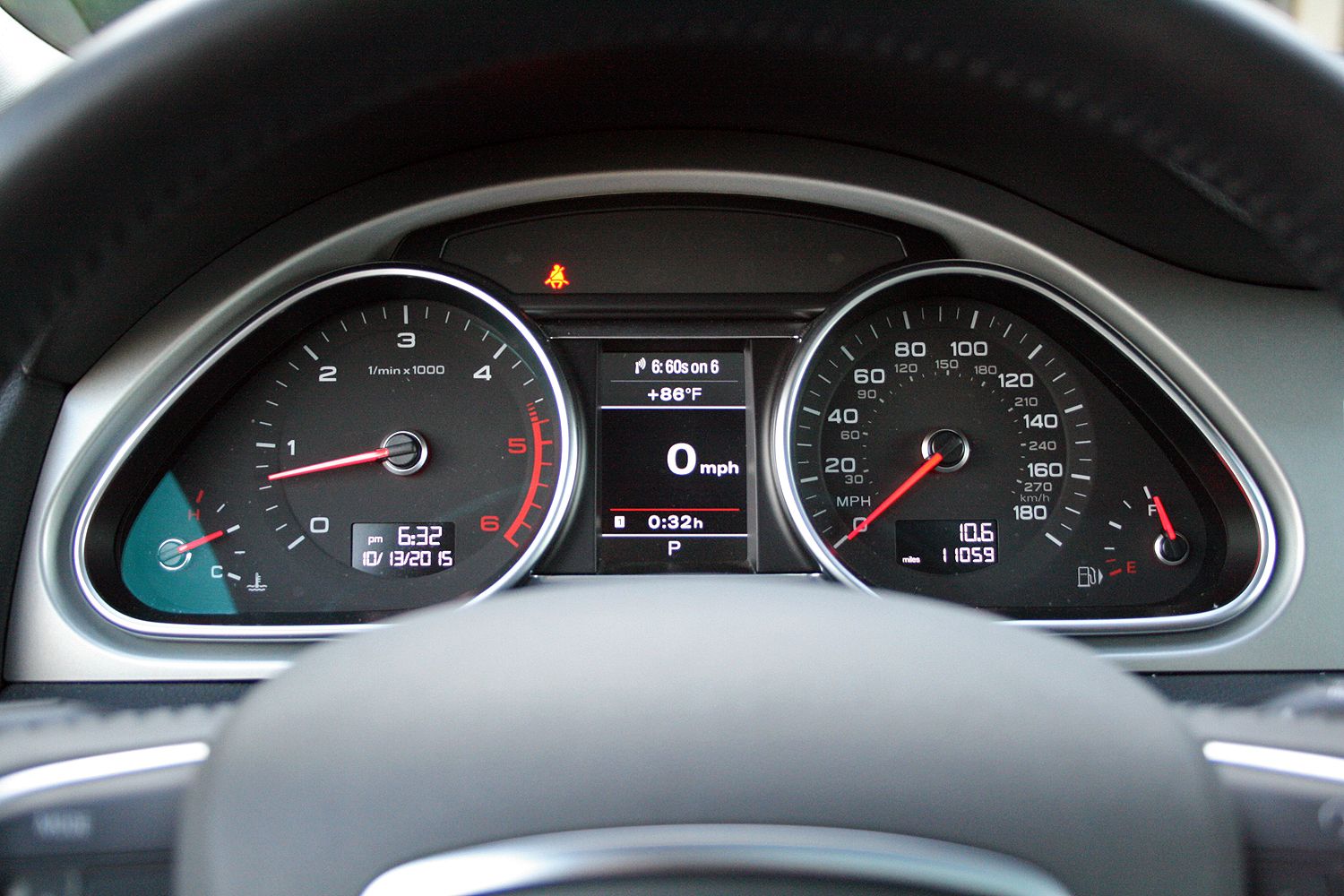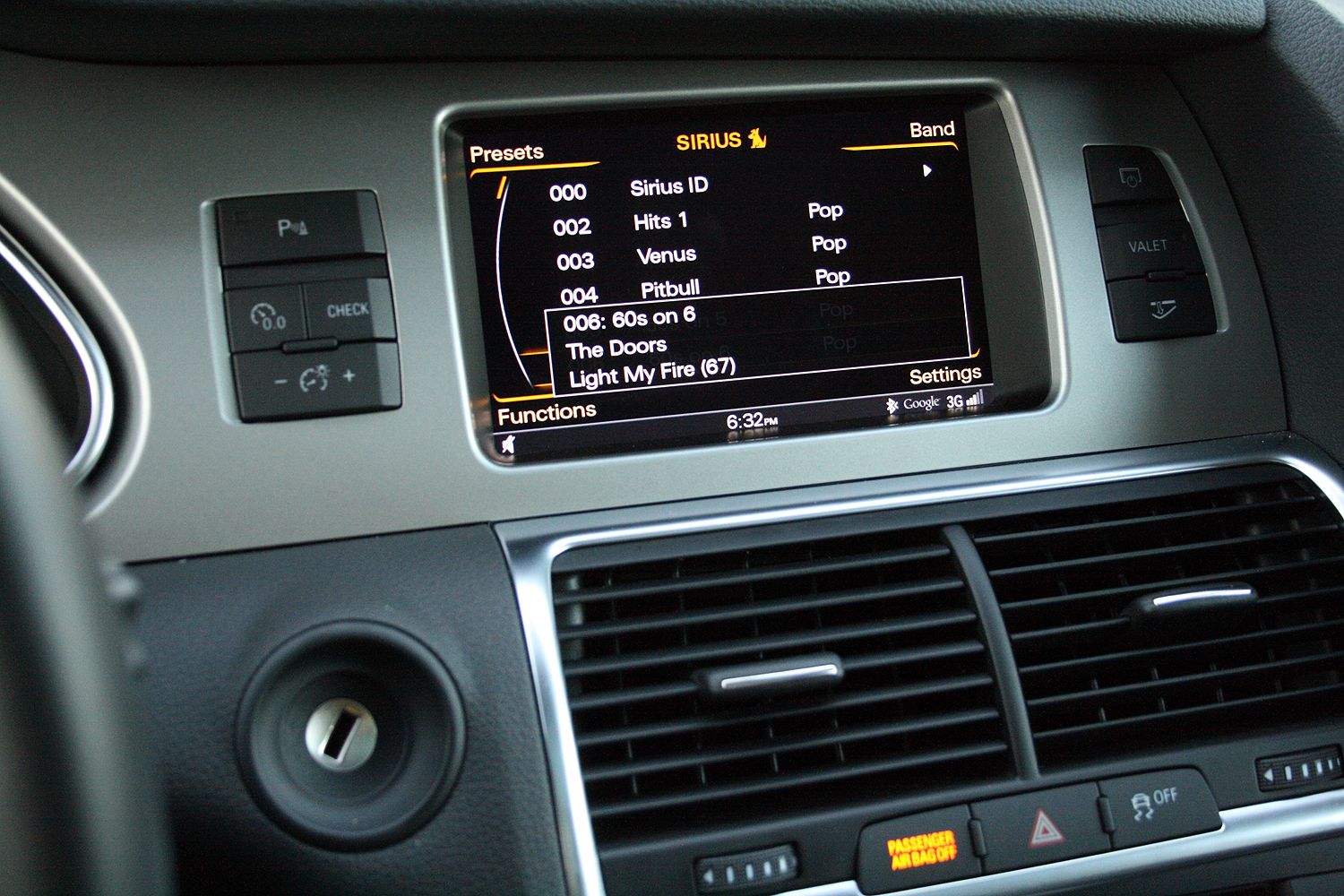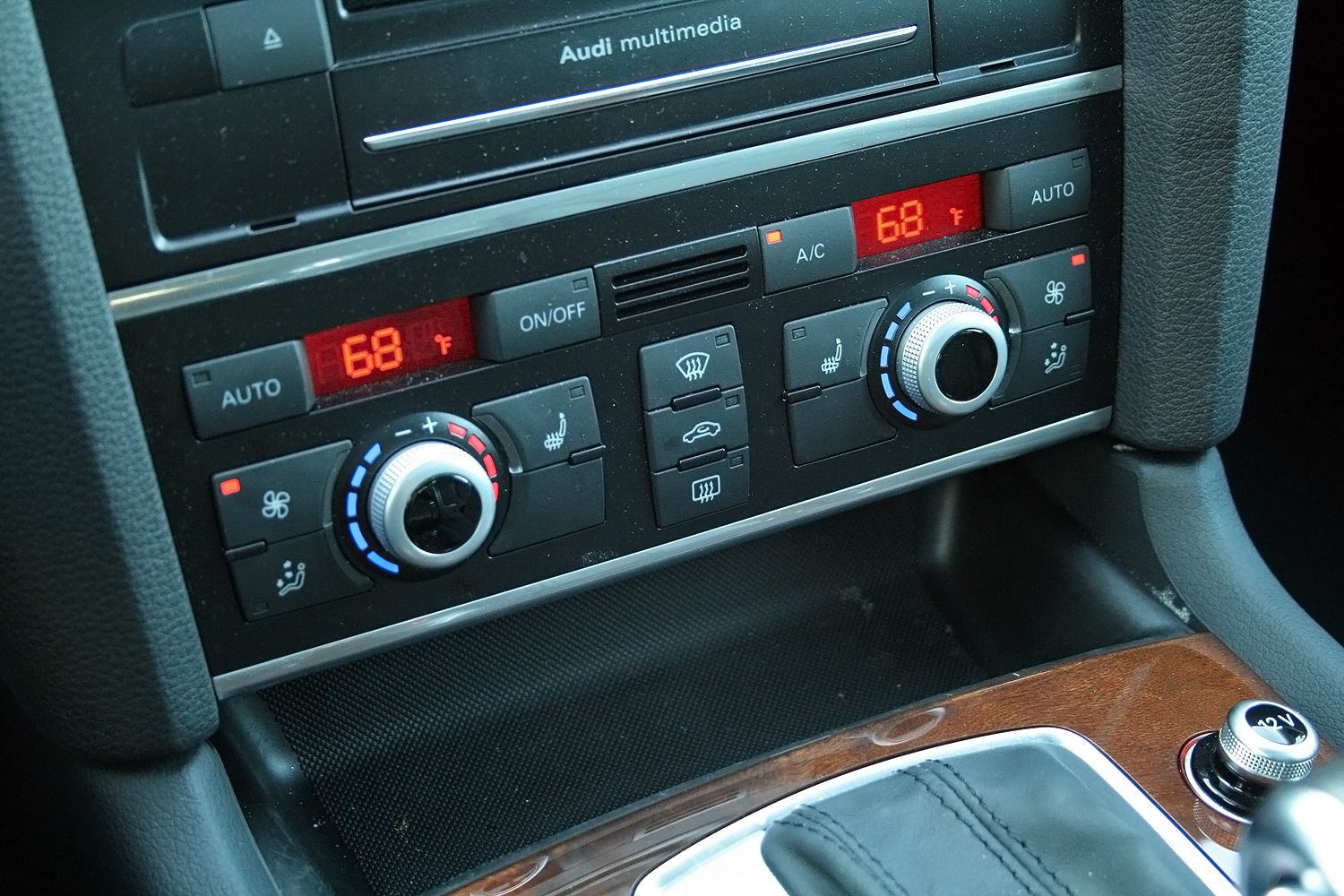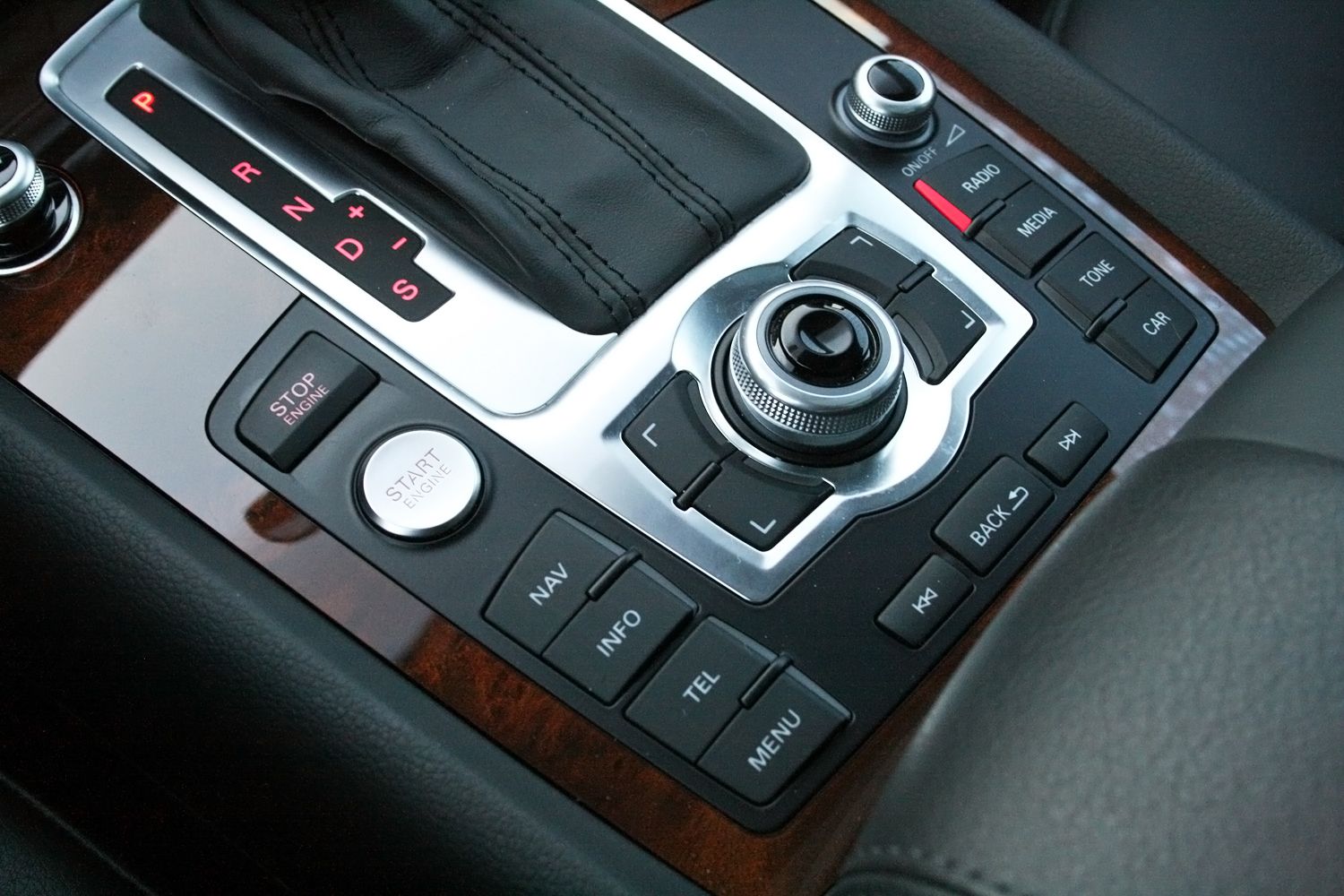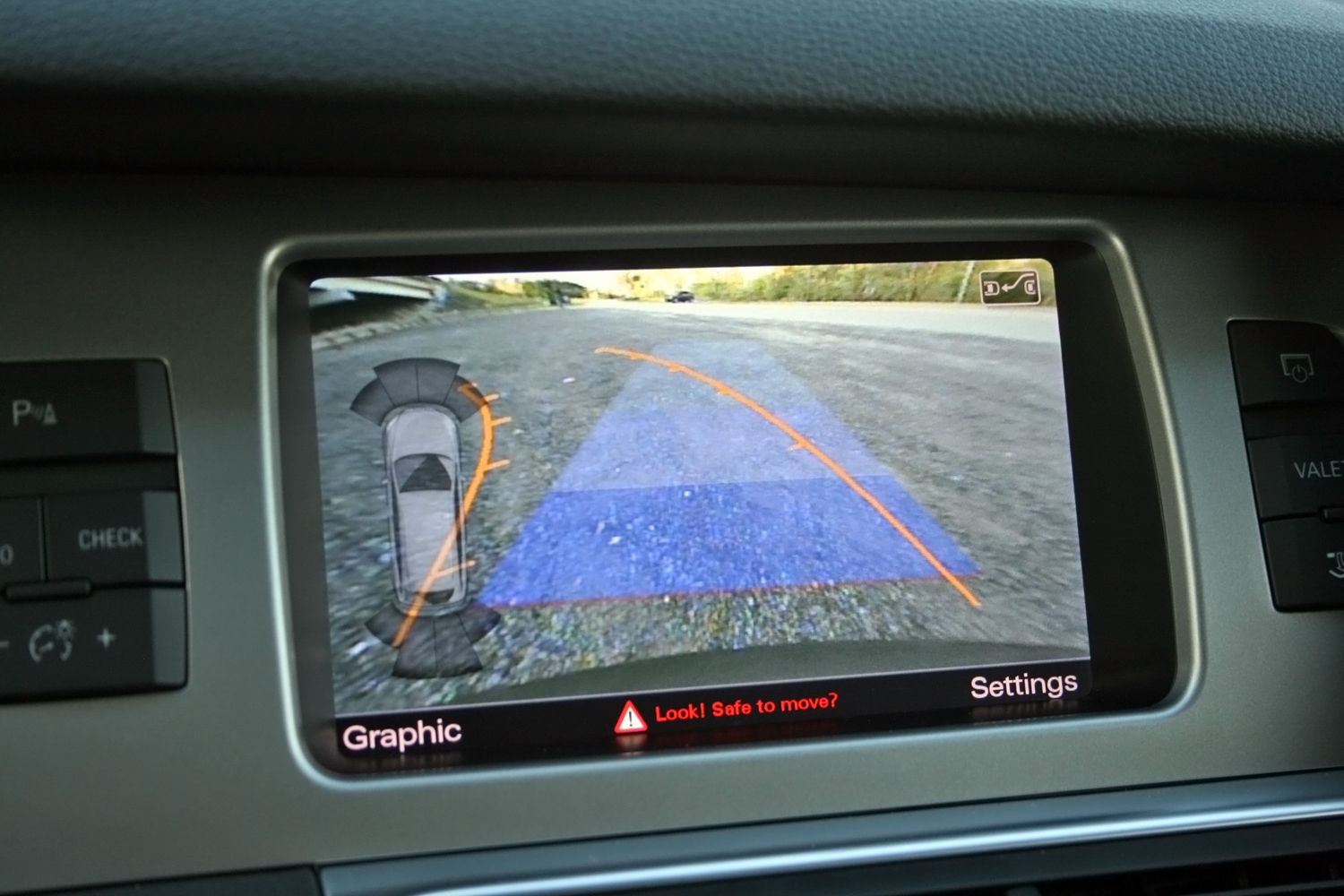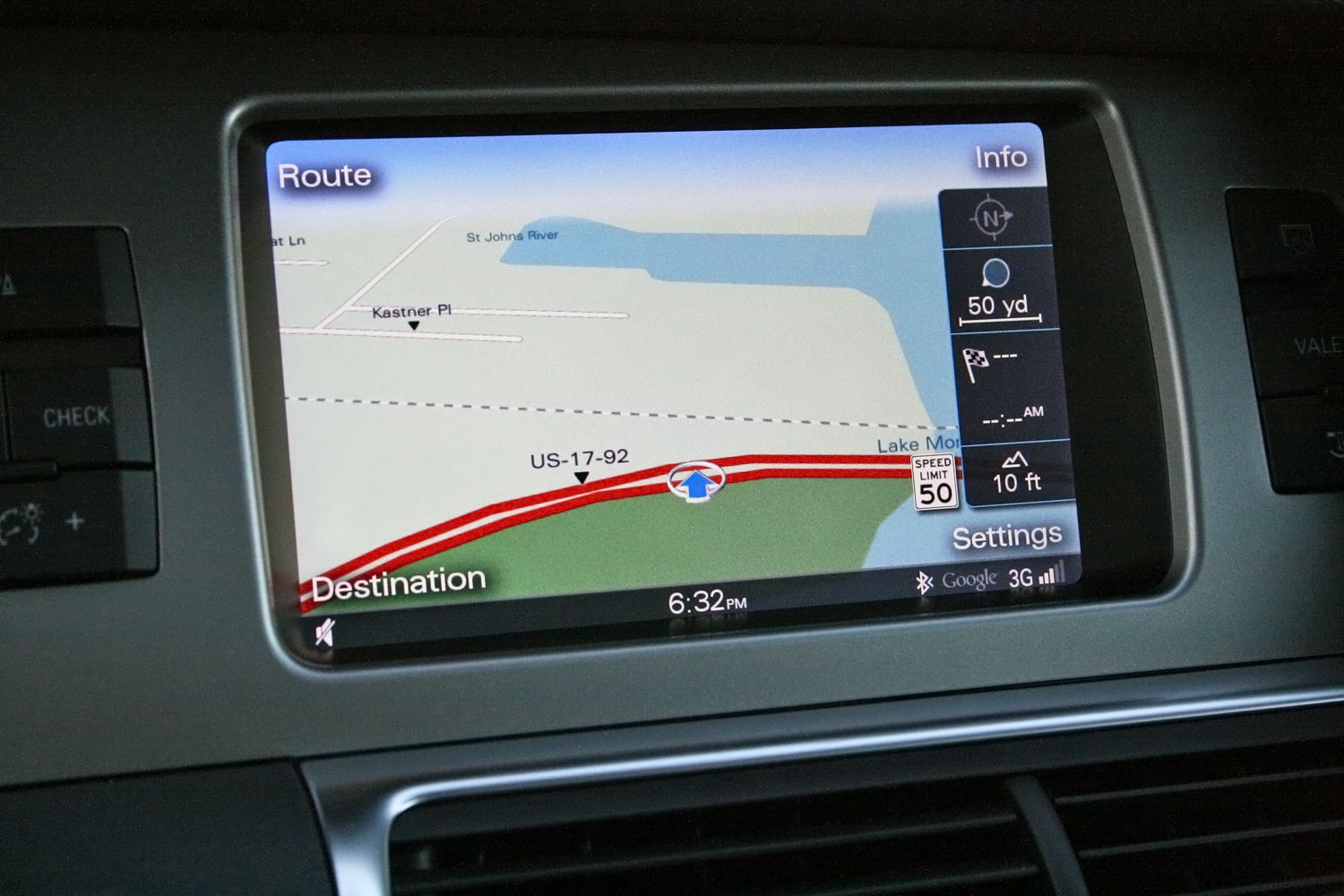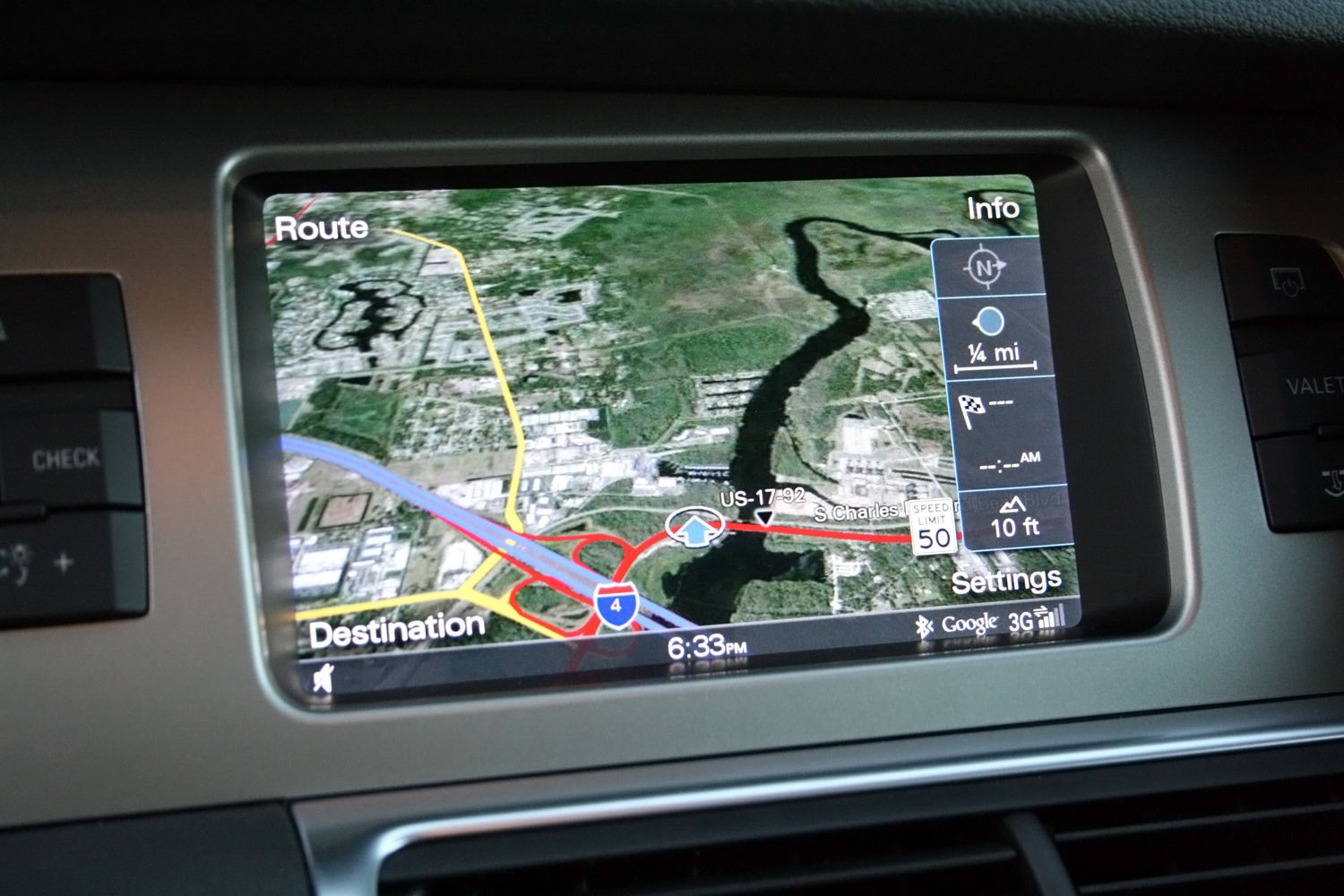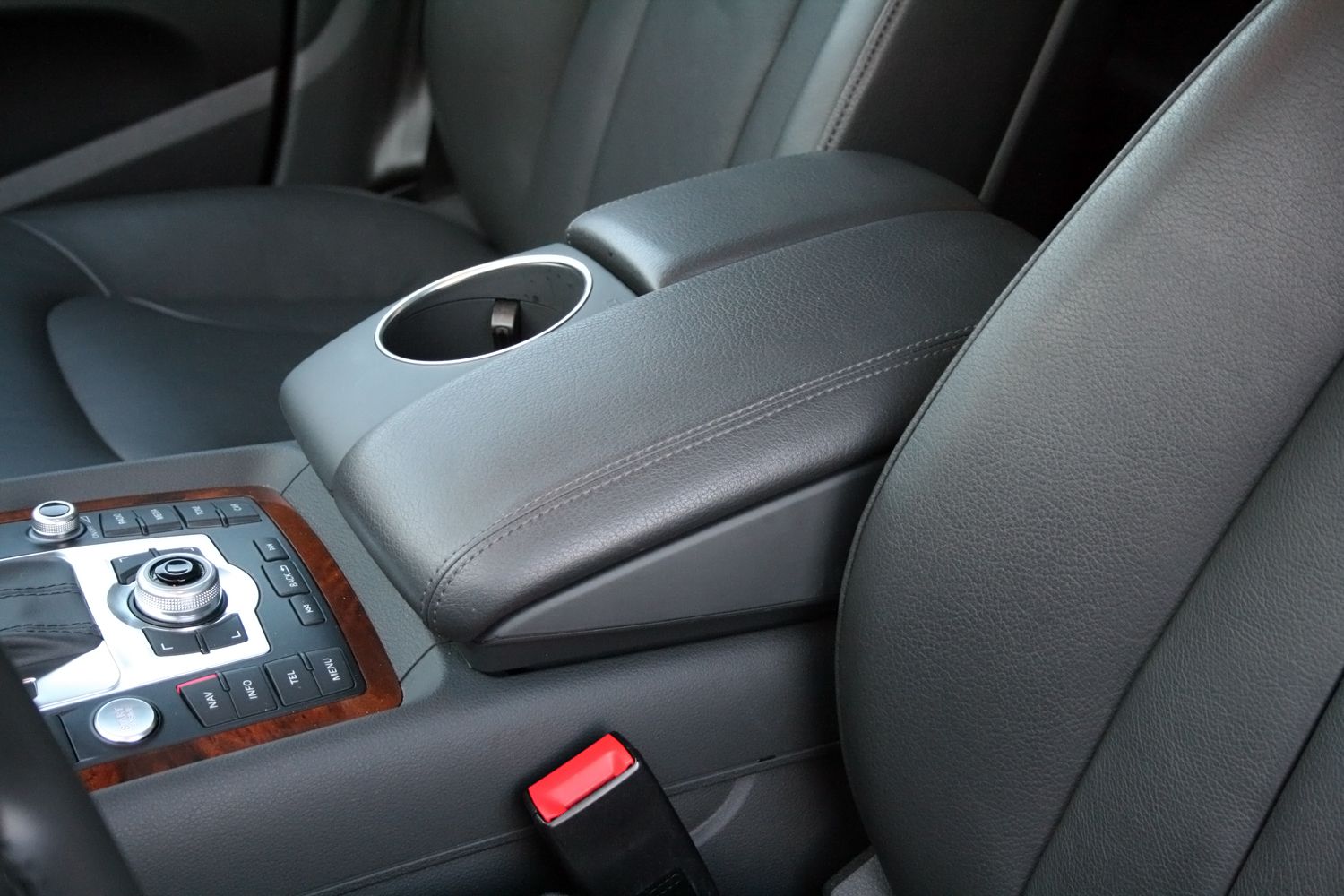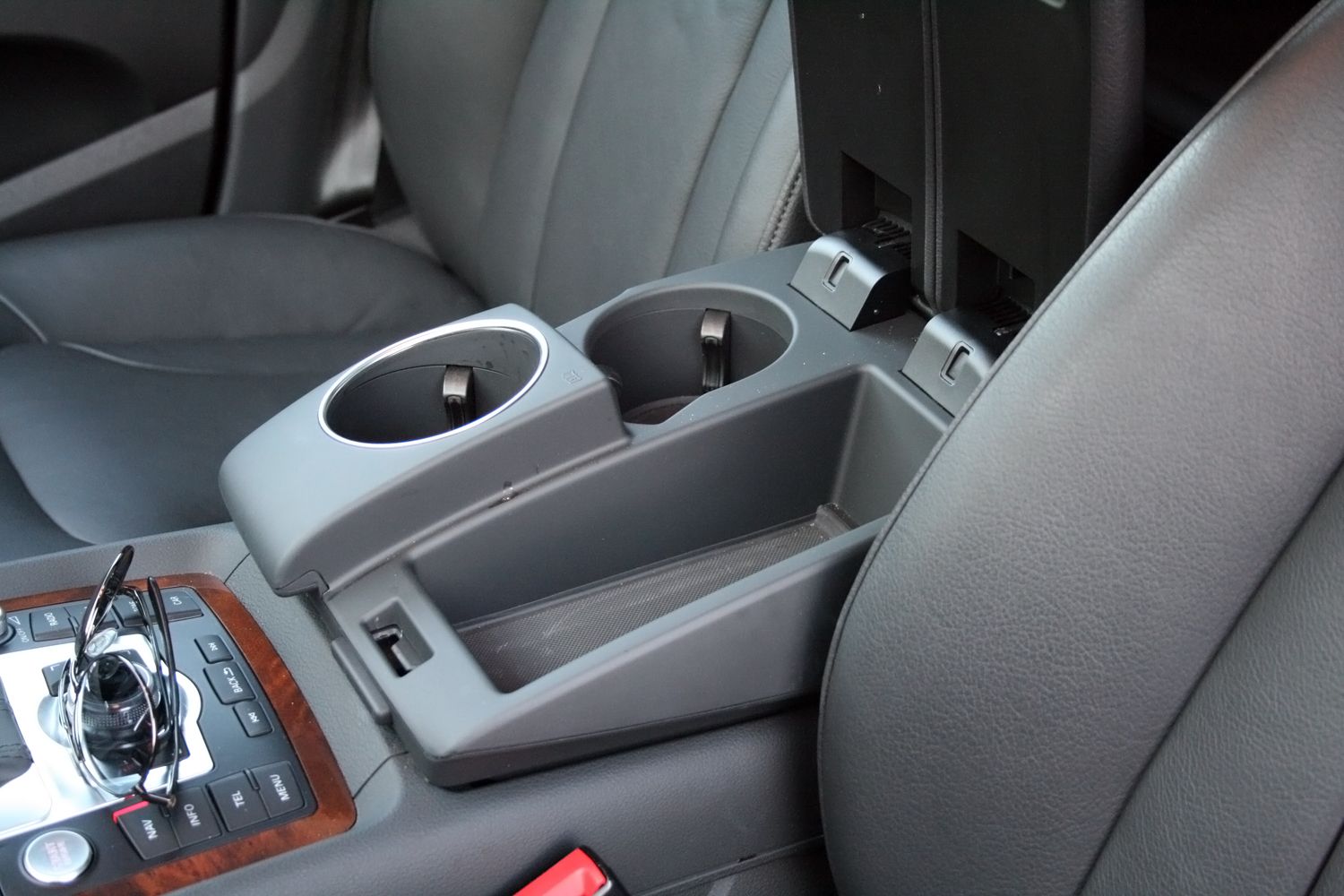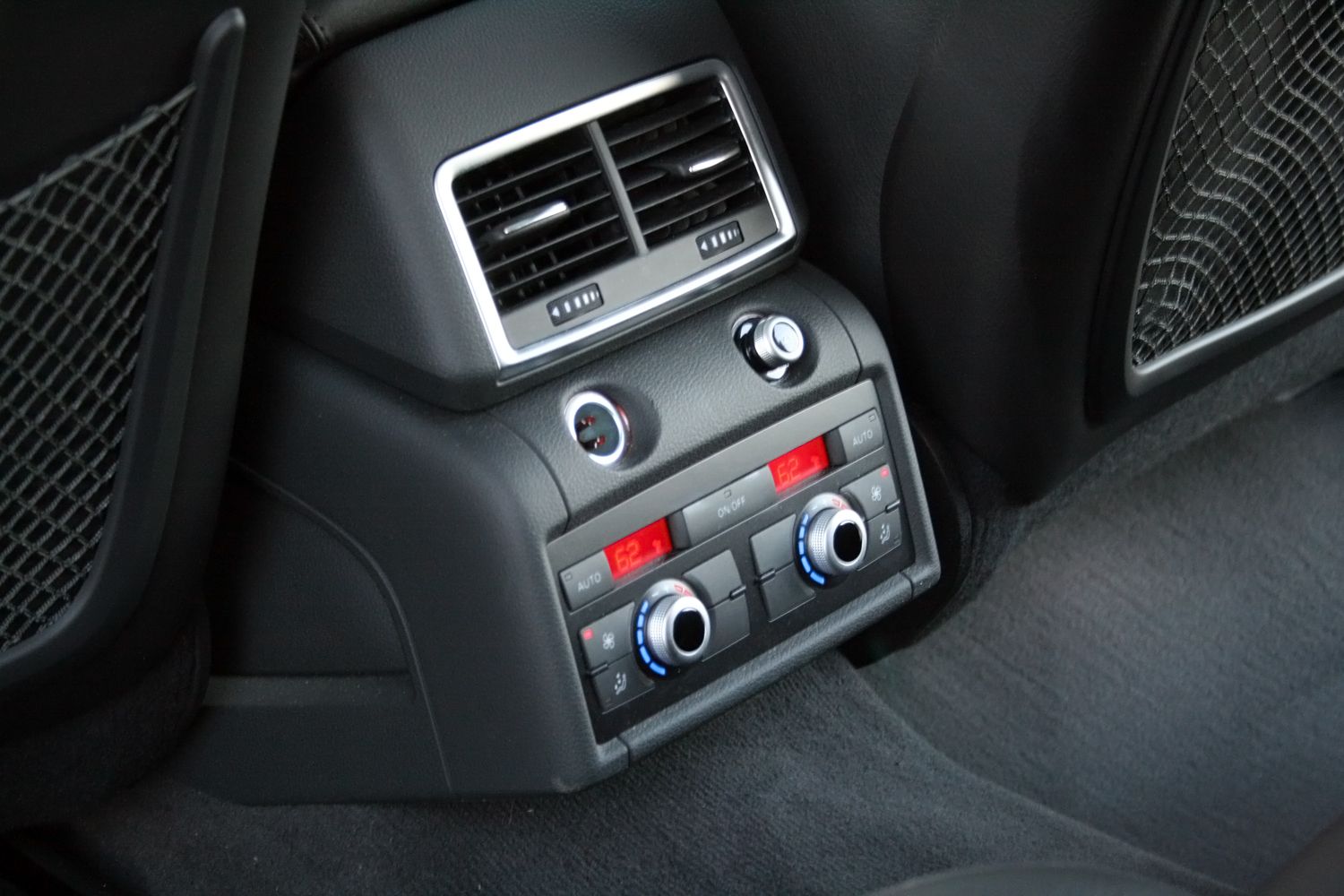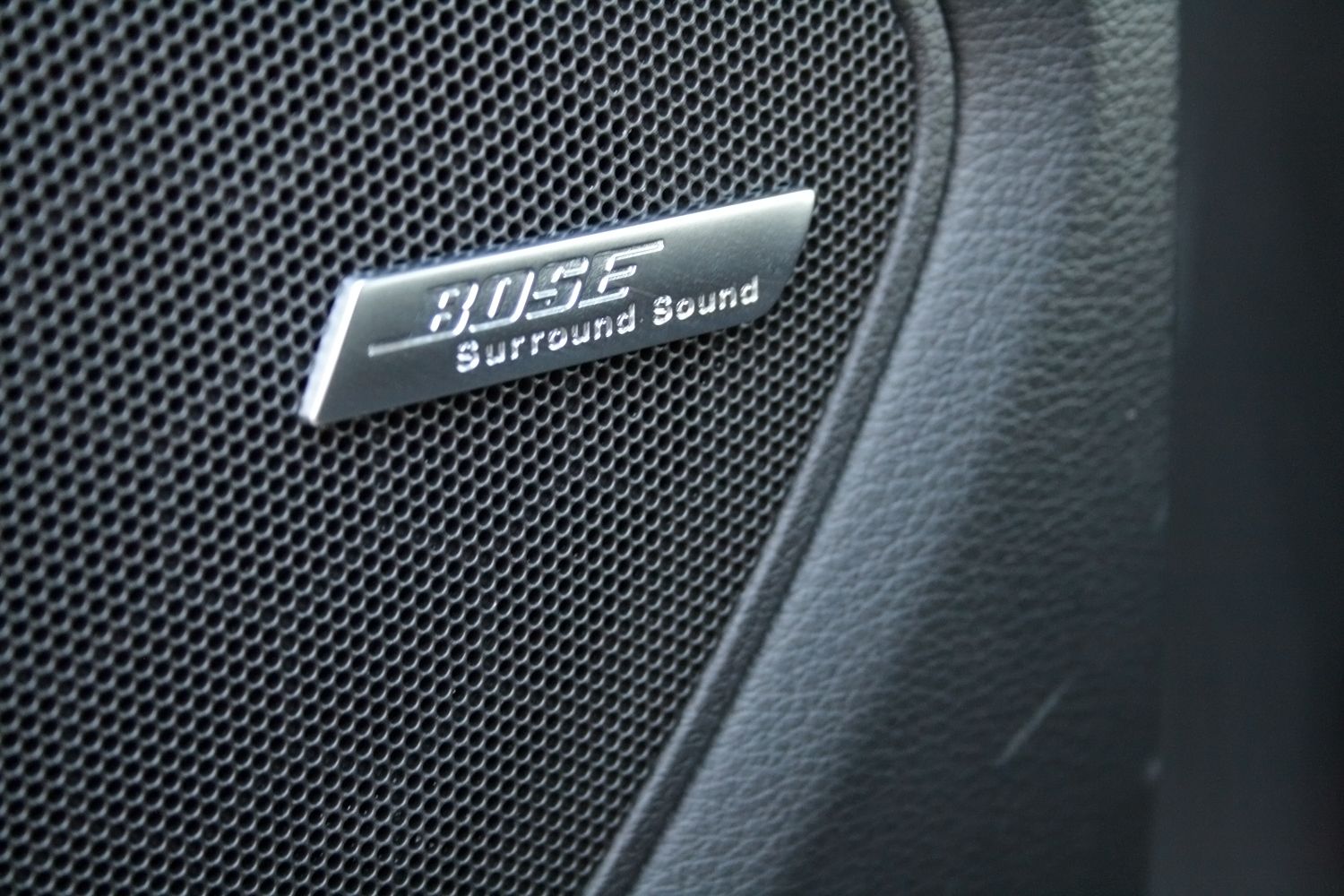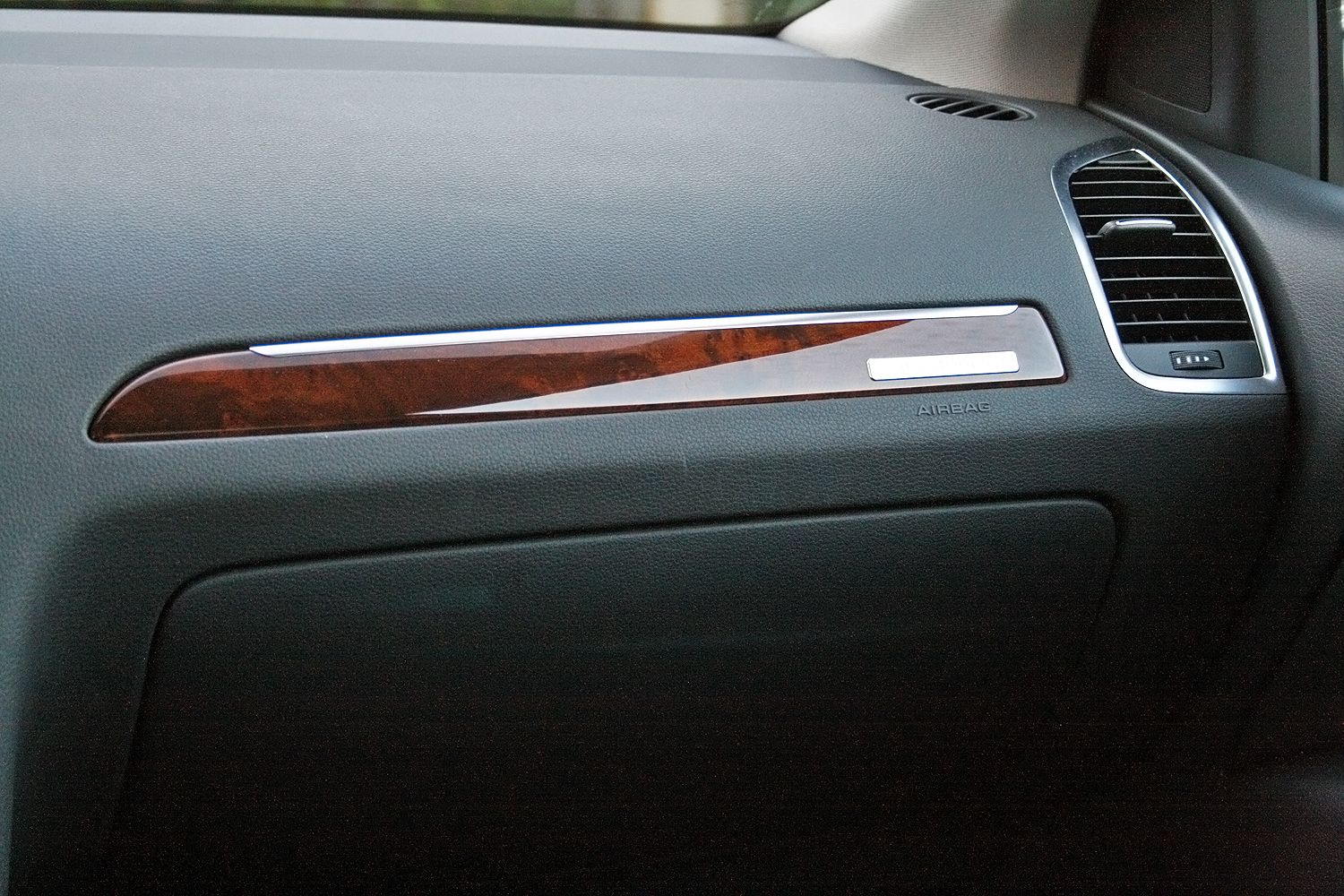The Q7->ke1083 is a child of the SUV->ke145 craze that began picking up momentum in the mid-2000s. No longer were SUV constrained to automakers like Chevrolet->ke199 or Ford.->ke31 Sure, Mercedes->ke187 had a couple SUVs in its lineup, but Merc already had a long history of building G-Wagens->ke1712 and such. Audi,->ke14 like Porsche->ke1 and BMW,->ke178 shocked the industry with the arrival of three-row people haulers.
Audi pulled the covers off the Q7 for the 2006 model year. Thanks to its parent company Volkswagen, costs were shared between the VW Touareg->ke321 and Porsche Cayenne->ke212 thanks to a common chassis. Still, each of the three played to buyers in different segments.
The first-generation Q7 underwent its only major updating for the 2009 model year. A new face, updated rear end, and a redesigned dashboard helped the Q7 keep up with the times. And while you can still buy a first-generation 2015 Q7 in the U.S., Audi has an all-new model waiting to cross the pond.
The completely redesigned 2017 Q7 raises the bar several notches in one swoop. A handsome new design with sharpened angles and a more aggressive stance greats onlookers, while occupants inside are treated to what is likely one of Audi’s finest interiors. An all-digital gauge cluster, extensive aluminum trim, and a minimalistic design propel the Q7 into the latter half of the decade.
But the updated Q7 is still months away. Should customers hold off buying a wait for the swanky new SUV, or does the current 2015 Q7 still earnestly compete? To find out, I spent a week behind the wheel of a 2015 model, fitted with the 3.0-liter TDI V-6, quattro AWD, and an economy car’s MSRP worth of options and extras.
Continue reading for the full driven review
2015 Audi Q7 - Driven
- Make: Array
- Model: 2015 Audi Q7 - Driven
- Engine/Motor: V6
- Horsepower: 240 @ 3500
- Torque: 406 @ 1750
- Transmission: eight-speed automatic
- [do not use] Vehicle Model: Array
Exterior
The Q7’s design may be six years old, but it’s still a handsome SUV. The large nose with LED accents, that big grille, and the sloping roof line all lead to a smartly designed package. It’s stately without being boring. My tester came coated in Daytona Gray Pearl with gray, five-spoke wheels to match. The monochromatic theme looks good and is a happy medium between the black grille and bright accents of the headlights, chrome touches, and taillights.
Those LED accents were hardly in short supply. Audi did basically invented the current LED daytime running light trend, after all. The Xenon headlights are wrapped LED, while the taillights are comprised of LED units.
Audi paid special attention to the Q7’s lower trim, as well. Both the front and rear bumpers have faux satin chrome skid plates and the lower rocker panels along the bottom edge of the doors have embossed divots that add character to the side profile.
While the body and its trim work still hold a modern style, the brake calipers poking through the 20-inch wheels leave a lot to be desired, design wise. It seems like an empty canvas left alone in a room full of art exhibits. It’s the small details like that which dull a design.
Interior
Climbing inside the Q7, you realize why its replacement is soon on the way. The cabin is dark and full of low-budget plastics – at least by today’s standards – and generally looks outdated. The dash and door panels are made from hard plastic and drag the interior down. The center stack contains a smallish infotainment screen. The HVAC controls consist of somewhat flimsy knobs and small buttons. The center console is covered in faux wood doesn’t fit the theme carried thought the vehicle.
But that’s the downside. Conversely, the controls are laid out well and make driving an enjoyable experience. The seats are comfortable, front and rear. In back, the rear bench splits 60/40-style and offers comfortable outboard seats with an armrest in the center. Pull a lever on the second row, and the third row becomes easily accessible, at least for able-bodied kids and tweens. The seats in back have enough space for two and easily fold flat for extra cargo room. Fold down the second row seats, and the Q7 transforms into a luxury cargo van.
The Q7 also has plenty of storage compartments. Maybe not as much as a minivan, but “things” always have a place. Additional cup holders in the doors, seatback pockets for the second row, and a large plastic bin behind the third row top the list of storage spots.
As for Audi’s MMI infotainment system, those familiar with Audi products will be at home. The console-mounted controller is within easy reach and keeps fingerprints off the screen. The system is fairly easy to navigate, but those not technologically inclined might have a harder time. The system’s crown jewel is Google Earth. Navigation functions are pretty to look at as direction are overlaid atop the satellite view of the area.
All told, the interior is function, yet showing its age. Those who don’t care to have the latest and grates will find it satisfying.
Drivetrain
The current Q7 has its quirks, but its most memorable feature is its powerplant. Under the hood lies the 3.0-liter V-6 turbodiesel. It cranks out 240 horsepower at 3,500 rpm and an impressive 406 pound-feet of torque at only 1,750 revs. Its operation is smooth and quiet, never calling attention to itself, while its power deliver is like riding a surging wave of torque that pushes the 5,412-pound SUV to impressive speeds in an equally impressive short time.
Sadly, you can’t have one. As of this writing, VW has issued a stop-sale for the 3.0-liter V-6 TDI as part of the EPA’s crackdown on the automaker’s alleged emissions-cheating software. The 3.0-liter, along with the 2.0-liter I-4 TDI found in other VW cars, must sit on dealer lots until VW figures out a solution for the problem. Read our detailed coverage on the DieselGate scandal here.
The TDI’s performance is matched with Audi’s eight-speed Tiptronic automatic transmission and full-time quattro AWD system. The transmission is a smooth-shifting unit that always seems to be in the right gear. Much of that can likely be attributed to the TDI’s massive torque curve. The intelligent quattro AWD system keeps the Q7 moving forward regardless of road conditions. There’s no snow to be found in Florida’s late summer, but I’d have no hesitations to attack a blizzard with the Q7.
The Q7 also provides plenty of muscle for pulling trailers. The SUV is rated to haul 6,600 pounds on its hitch. I have a sneaking suspicion the engine isn’t the limited factor to that weight limit.
Trailer towing is great and all, but Q7 shoppers probably choose the TDI’s fuel economy more than any other reason. The EPA rates (or did, at least) the Q7 TDI at 19 mpg city, 28 mpg highway, and 22 mpg combined. My mixed driving resulted in roughly 23 mpg combined. Not bad for a full-sized, three-row SUV with AWD.
Safety
The Q7 comes with most of the modern safety equipment. It seems nearly every interior panel has an airbag hiding behind it. All three rows come with side curtain airbags, the front seats have torso airbags as standard, the second row seats have the option of torso airbags, and of course, both the driver and front passenger have individual airbags coming from the dash.
Electronic Stability Control, ABS, traction control all help keep accidents from happening in the first place. The 2015 Q7 does lack modern features like forward collision warning, an automatic braking system, and lane departure warning. Look for those on the 2017 Q7.
Driving Impressions
The Q7 is no sports car, but it handles impressively well for such a large SUV. Steering is nicely weighted and lacks any on-center deadness. The throttle and brake are easy to modulate without any jerkiness. Outward visibility is good, though you’ll have to rely on the side mirrors for spotting vehicles at the rear quarters.
The Audi performs well around town, as low-end torque pushes the Q7 off the line with ease. Brake squat and throttle lean are neither a problem as body pitching is managed well. Body roll around turns is also well controlled, though there is some lean involved. On the open highway is where the Q7 really shines. The transmission falls in to eighth gear, the TDI’s revs drop, and cruising feels effortless. The endless supply of torque means downshifting for hills is rare. Passing does require a lower cog, though it happens quickly. Turbo lag is present, but isn’t really an issue.
Overall, the Q7 TDI is a sweetheart of an SUV to drive.
Pricing
All this luxury and power doesn’t come cheap. The base price for a gasoline-powered Q7 starts around $48,000. My tester came with a $52,900 base price and loaded several expensive options atop that. The options are mostly grouped into three packages, the Premium Plus model, Off-road Style Plus package, and Warm Weather package.
The Premium Plus model includes the MMI navigation, parking system with rearview camera, Audi Connect, Bose sound system, Audi Advanced Key, power-adjustable steering column and memory seats, auto-dimming mirrors with power-folding and heated exterior mirrors, and the panoramic sunroof. All of this totals $6,500.
The Off-road Style Plus package includes the Black Optic package with matte black roof rails, stainless steel front and rear skid plates, the 20-inch, five-spoke wheels, and all-season tires. This bumps the price up by $3,200.
Lastly, the Warm Weather package includes deep tenting on the sunroof, side window shades, and four-zone climate controls This is another $1,300. Add on the $925 destination charge, and the grand total comes to $65,375.
Competition
BMW X5
The BMW X5 is a solid competitor to the Q7, but only if you’re not worried about holding seven passengers; the X5 is limited to five. Aside from that, the BMW offers all the luxury, tech, and powertrain goodness found in the Audi. And like the Q7, the BMW offers a turbodiesel option that cranks out 255 horsepower and 413 pound-feet of torque. If diesel is your preferred fuel, the BMW does have the upper hand at this point, simply because it isn’t currently effected by the EPA’s investigation.
Prices for the BMW X5 start at $53,725 and grow to $69,125, before options. Choosing the diesel version sets the starting price at $57,525.
Read our full review here
Mercedes-Benz GL Class
Like Audi with the Q7, Mercedes has a new GL Class coming out for the 2017 model year, so in all fairness, here’s the current GL Class. Interestingly enough, the GL has been around just as long as the Q7, having debuted in 2006. The GL did get an extensive re-make for the 2013 model year, helping it stay competitive aginst is rivals.
The GL Class offers a slew of engine options, including the BlueTEC turbodiesel. The 3.0-liter V-6 produces 240 horses and 455 pound-feet of torque. AWD is found here as well. Prices for the current GL Class start at $64,500. Ironically, the BlueTEC model is the least expensive trim in the GL Class.
Read our full review here
Conclusion
The Audi Q7 proved itself to be a solid offering in the luxury, full-size SUV department. Its powerful TDI engine, smooth powertrain, and comfortable interior should check off most boxes on both the “needs” and “wants” lists. Now, I will admit that after looking at the all-new 2017 Audi Q7, this 2015 version becomes evermore outdated in my eyes. For some buyers not interested in having the newest stuff, it might be a non-issue. For others, the new Q7 might be worth waiting for.
Admittedly, the TDI engine greatly increased my liking for the Q7, so the fact VW and the EPA are currently preventing sales of the 3.0-liter turbodiesel really dampen the fun. Hopefully the Volkswagen’s fix will happen soon and the Q7 TDI will be moving off dealer lots again. In the mean time, stay tuned to TopSpeed for any breaking news on the topic.

